After returning from Volubilis to Meknes, I first went to a pastry shop where I had “almond juice.” In fact, it was milk with finely ground peeled almonds, but it was tasty nonetheless.
Then I went to a restaurant that had been recommended to me at the hotel, so I came there for lunch.
Since all of this was happening in Morocco, which is a fairly “relaxed” Islamic country, though not too much, in order to have lunch, I “had” to enter the restaurant and even go upstairs. I was completely alone there, but at least I could eat in peace. Except in Marrakech, and also in Essaouira, where there are many foreign tourists, in the other Moroccan cities I visited it is not recommended for women to sit outside. Probably nothing would have happened, but I had no desire to test that. I came to this restaurant to have lunch, not to push some kind of feminist agenda, which, after all, isn’t particularly important to me.
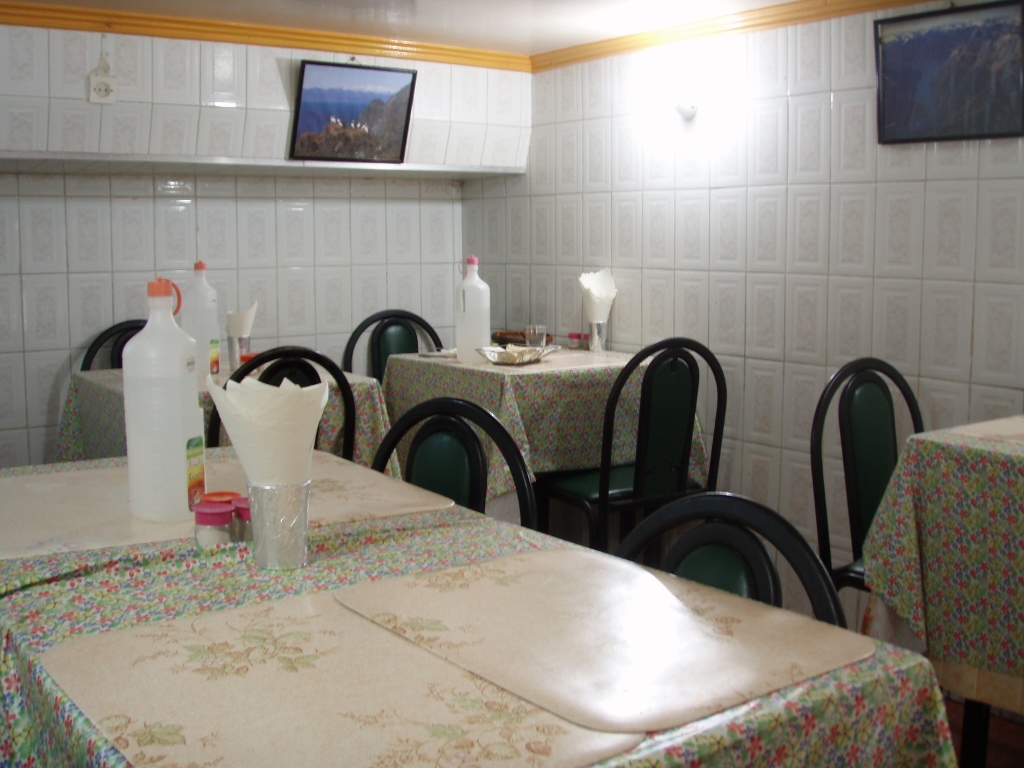 Restaurant in Meknes, section for women
Restaurant in Meknes, section for women
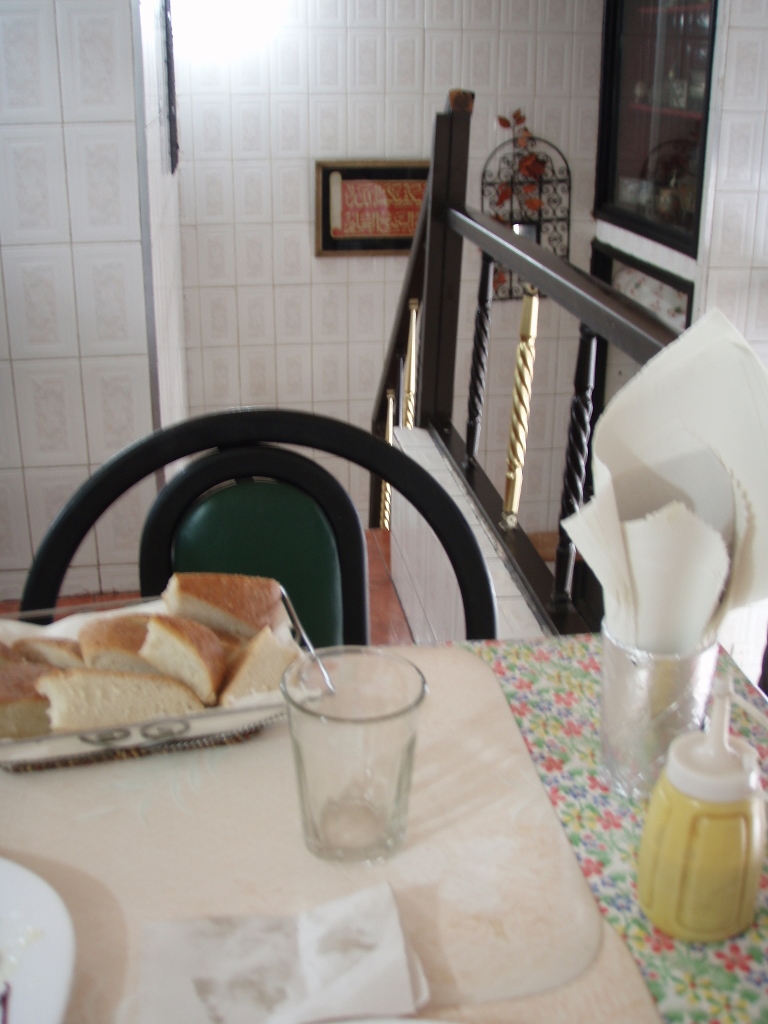 Restaurant in Meknes, section for women
Restaurant in Meknes, section for women
The food was quite good and it was certainly plentiful.
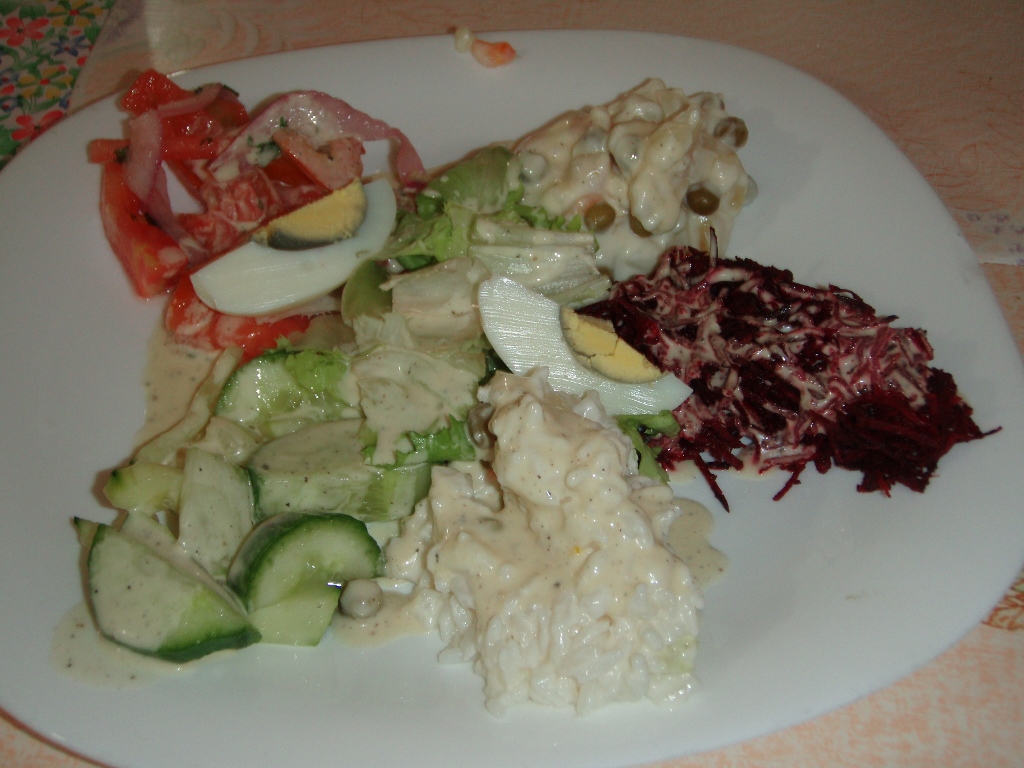 Part of the lunch in Meknes
Part of the lunch in Meknes
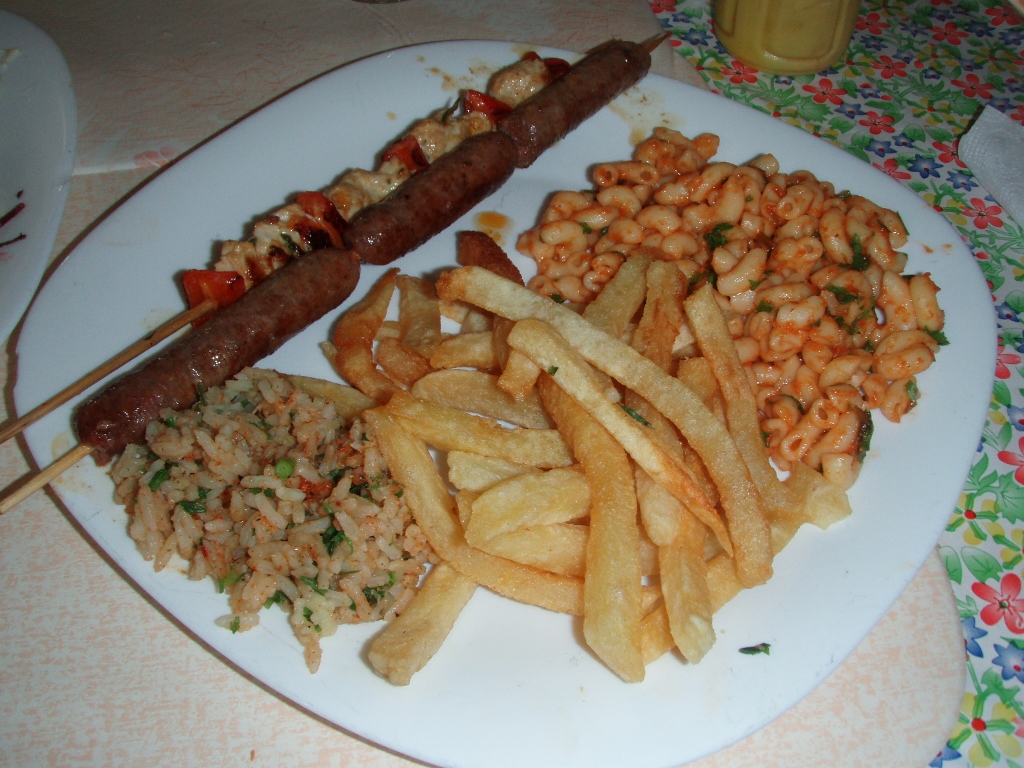 Part of the lunch in Meknes
Part of the lunch in Meknes
With happily full stomach, I went to an internet café and then briefly to my hotel room nearby, since I needed to drop off some things and get ready for more sightseeing. My hotel was located in the new part of the city and my plan now was to go to the Medina, the old part of Meknes. Medina is a term often used for the old part of North African cities, usually surrounded by walls.
Meknes is one of the four imperial cities of Morocco, meaning one of its historic capitals. The others are Fes, Marrakesh and Rabat, the last one still being the current capital of the country.
Meknes had the honour of being the capital during the reign of the Alaouite sultan Moulay Ismail Ibn Sharif (r. 1672–1727), but it was originally founded in the 11th century as a military stronghold.
Today, the Historic City of Meknes is a cultural property listed as a UNESCO World Heritage Site. The main reason for this is that the sultan built high walls around the city (some of them nearly 15 m high) with imposing gates (nine in total), using a blend of Islamic and European architectural styles that were present in North Africa in the 17th century. Within the walls, there are over 20 mosques, along with hammams, palaces, private houses, and more.
I first went to the northern gate of the old city, called Bab Berdaine, because my idea was to enter the Medina from that side and then continue towards the more important areas. That way, I made sure to see more or less everything I was interested in.
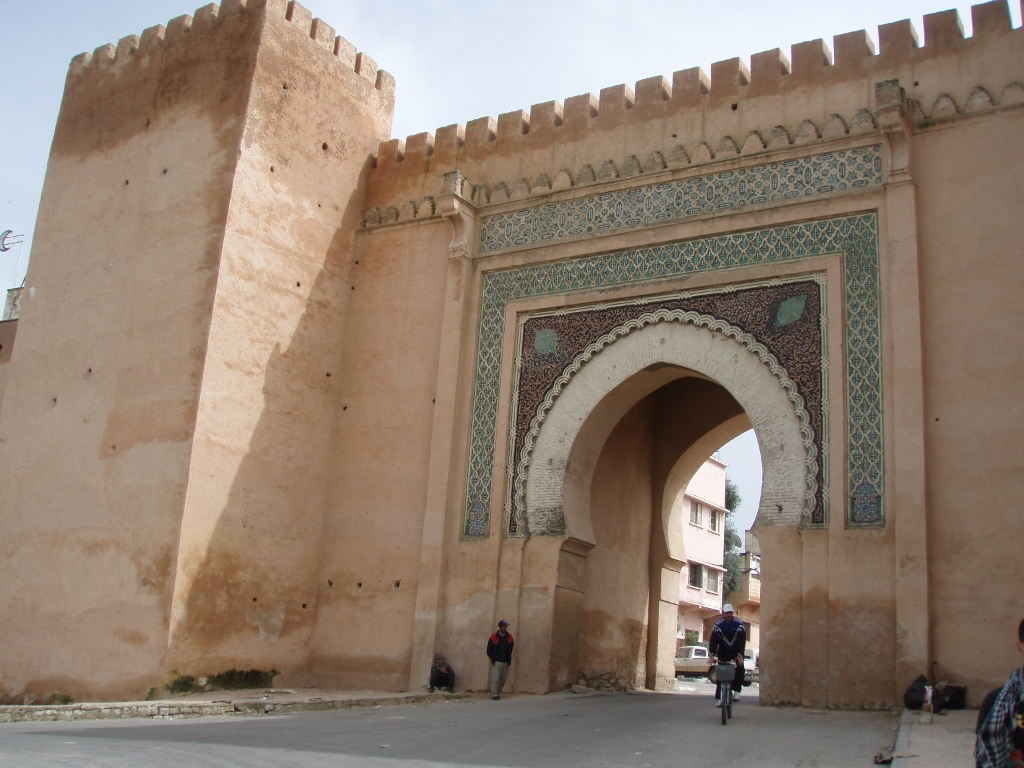 Bab Berdaine in Meknes
Bab Berdaine in Meknes
Within the old city, people still live and work today, and once you enter, there are several souqs, which means markets, each one specialised. In some, gold shops are concentrated; in others, leather and leather goods are traded. There’s a souq specialised in fruits and vegetables, one for spices and dried fruits, another where metal rods and metal objects are made and sold, a souq for textiles and carpets, and so on.
I first came across the souq with fruits and vegetables.
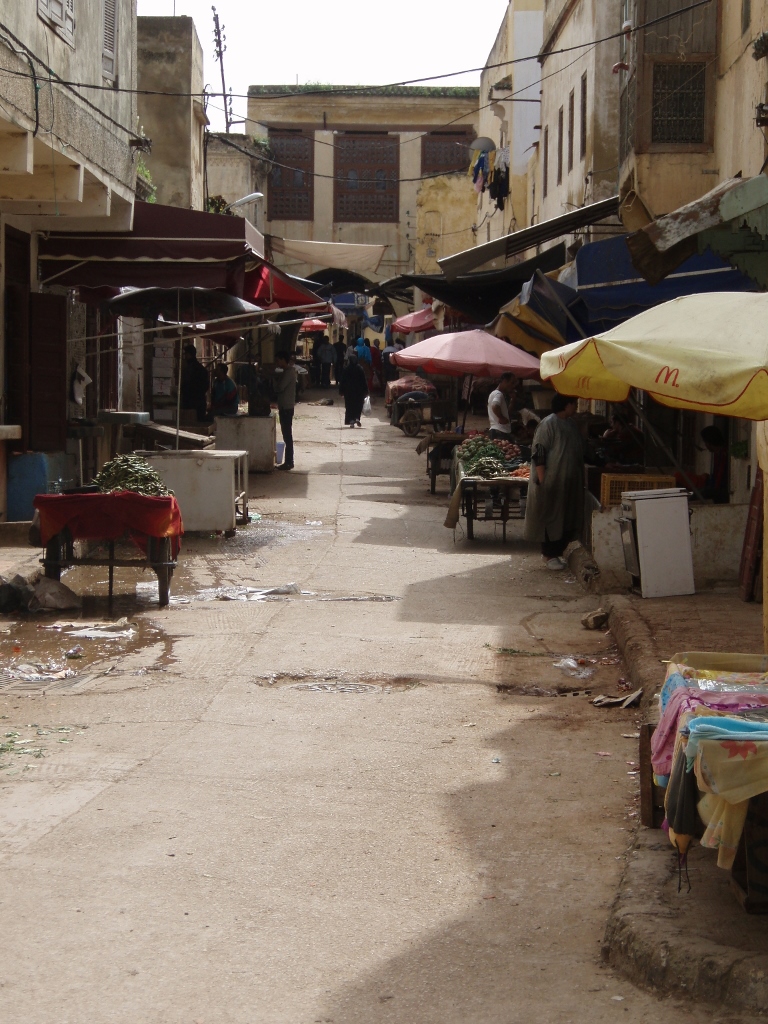 Fruits and vegetable souq in Meknes Medina
Fruits and vegetable souq in Meknes Medina
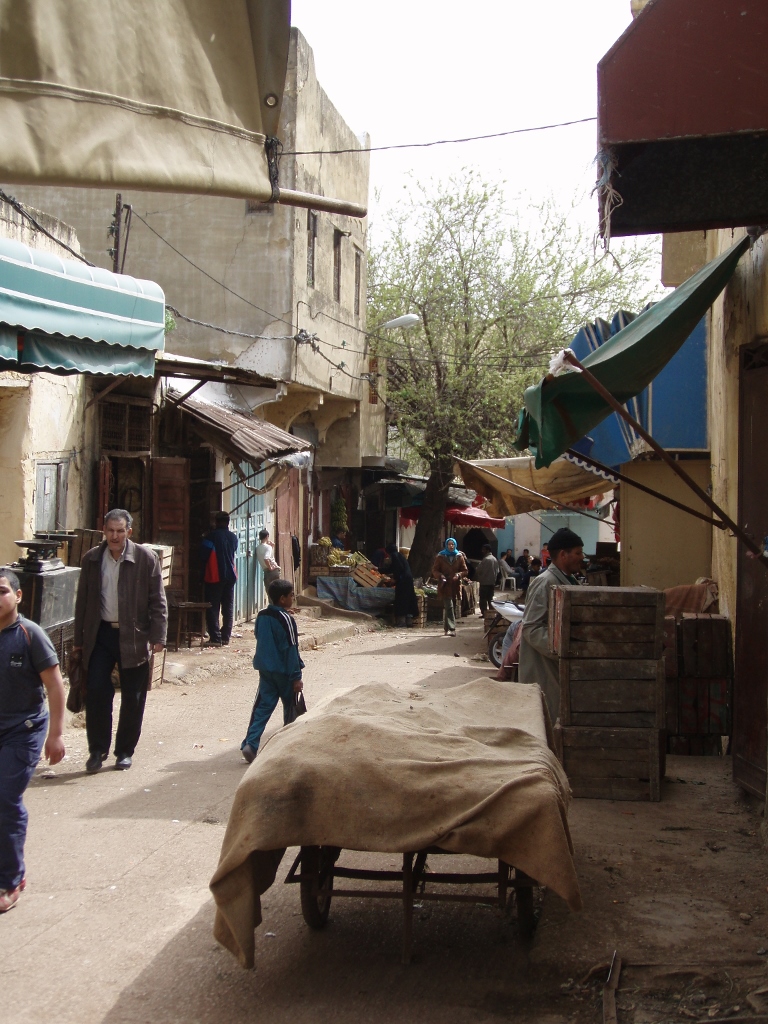 Fruits and vegetable souq in Meknes Medina
Fruits and vegetable souq in Meknes Medina
The somewhat run-down appearance of this place shouldn't be misleading. To start with, I was passing through in the afternoon and it's quite possible that the shops and stalls were closed.
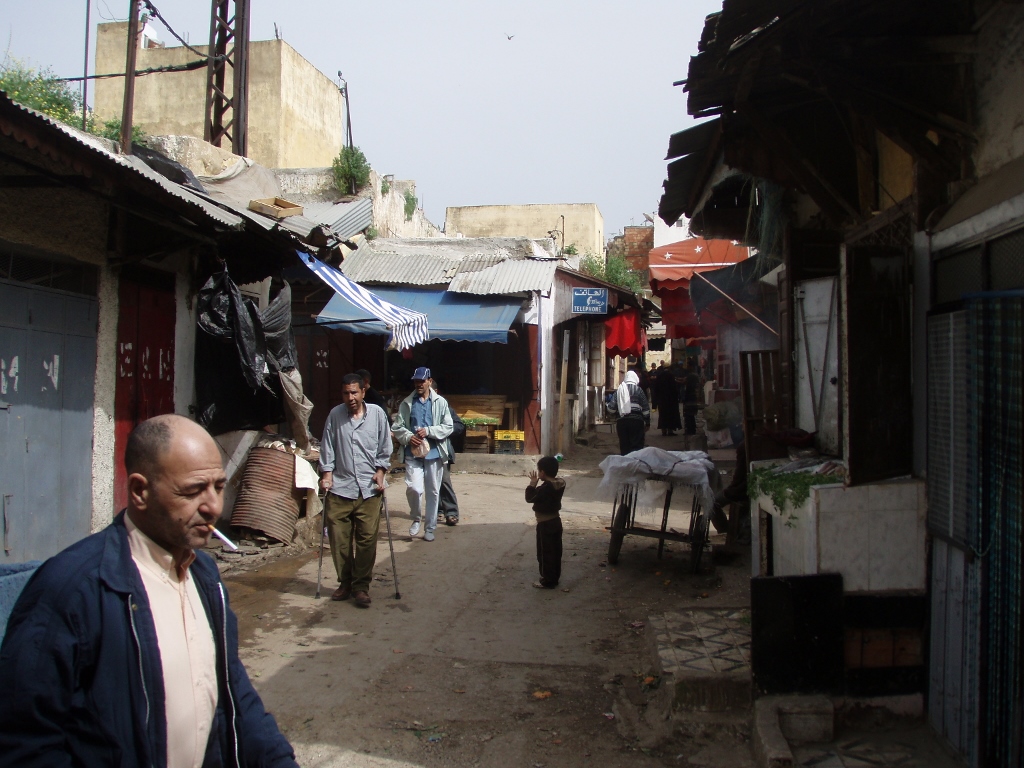 Fruits and vegetable souq in Meknes Medina
Fruits and vegetable souq in Meknes Medina
There, I saw bananas, artichokes, oranges, potatoes, and so on being sold. Chickens and eggs were also available, but what I found particularly interesting and picturesque was when I reached a stall selling olives and preserved lemons, which are one of Morocco’s specialties.
The kind vendor in the next photo offered me a few different types of olives to try, as well as a slice of preserved lemon, even though I told him I was just passing through. He also agreed to pose for a photo. By the way, I took the photo of the lemons a bit later.
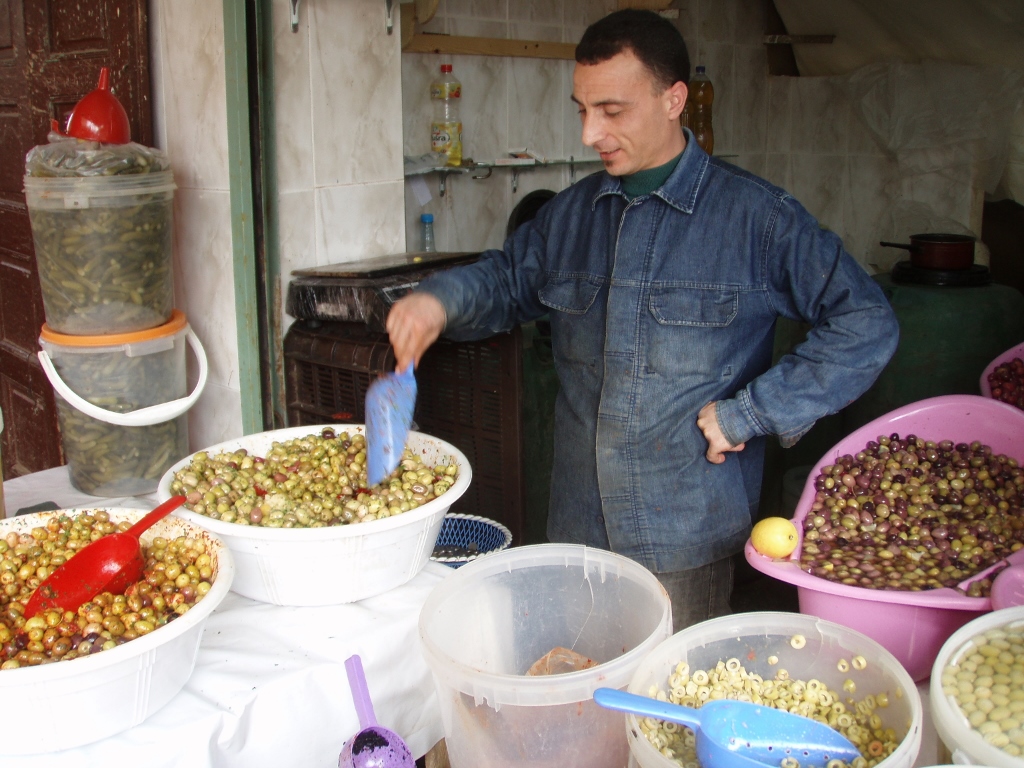 Fruits and vegetable souq in Meknes Medina
Fruits and vegetable souq in Meknes Medina
I continued my walk and along the way I was able to see some very beautiful and picturesque parts of the Medina in Meknes.
 Medina in Meknes, a detail
Medina in Meknes, a detail
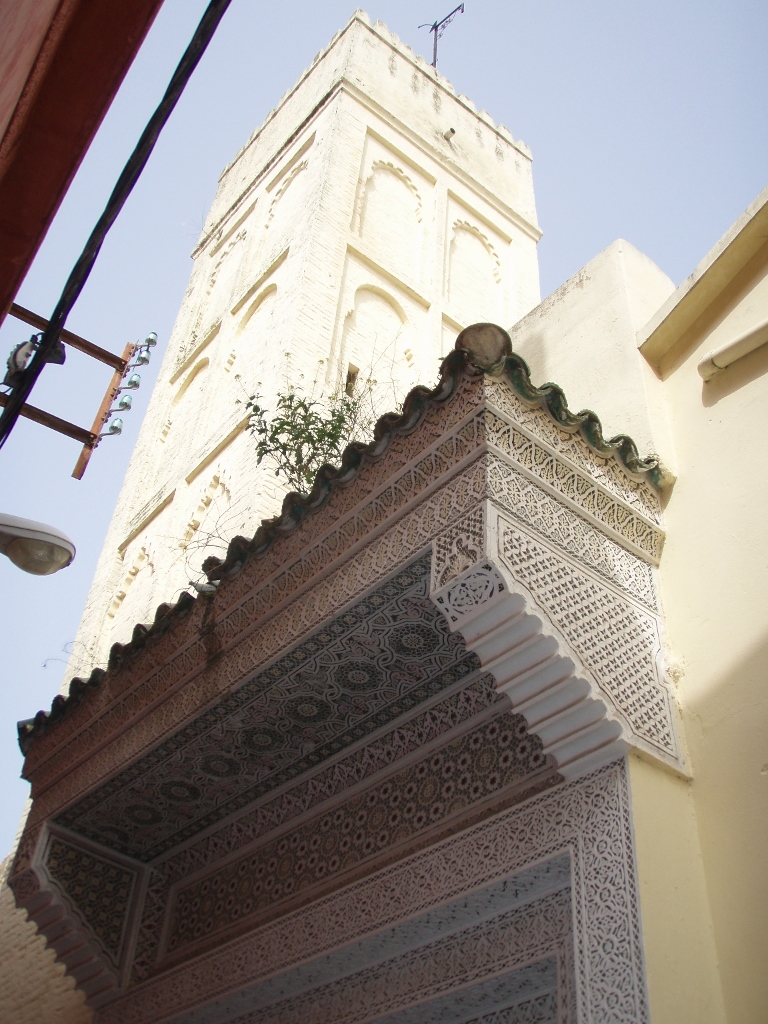 Medina in Meknes, a detail
Medina in Meknes, a detail
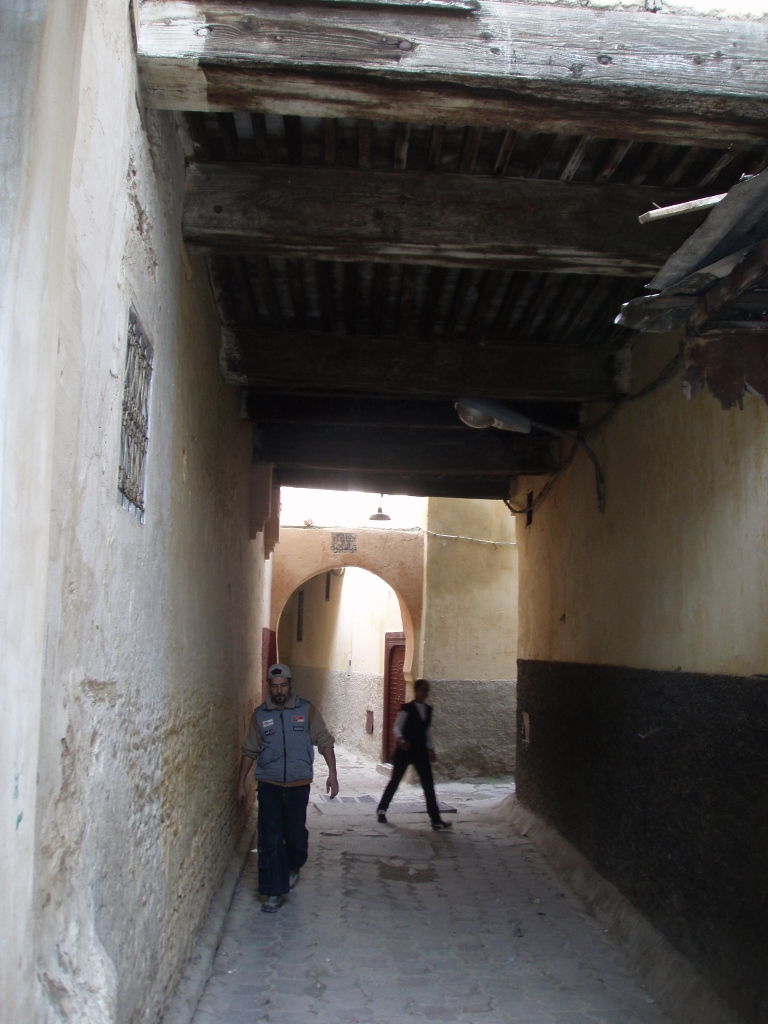 Medina in Meknes, a detail
Medina in Meknes, a detail
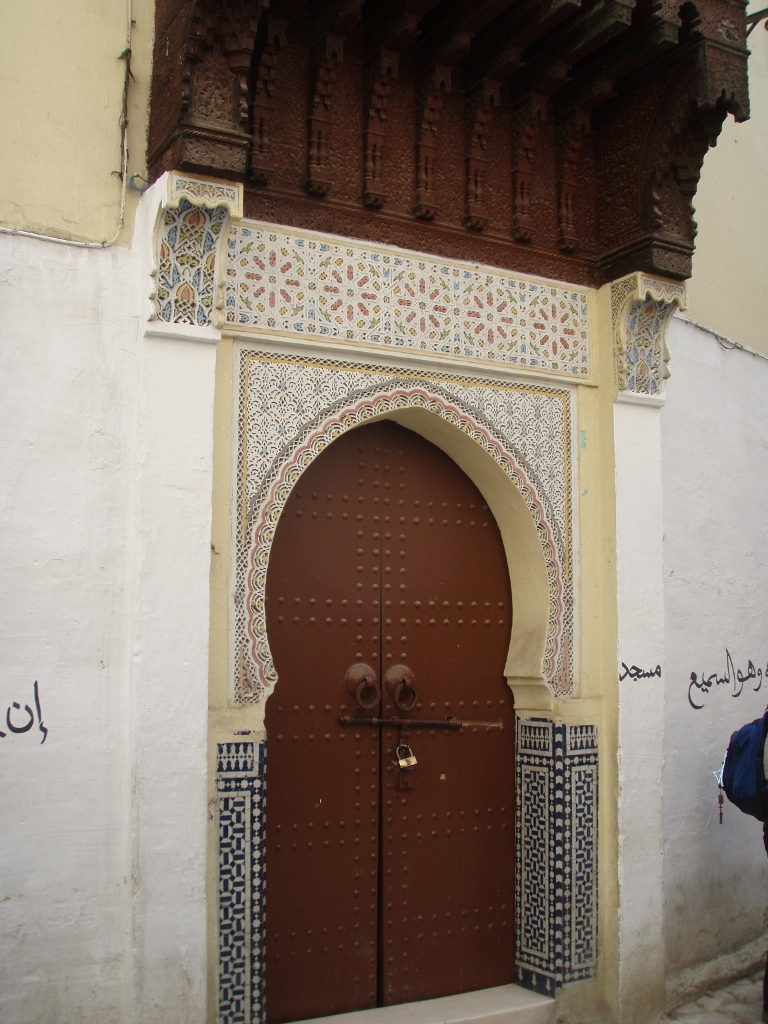 Medina in Meknes, a detail
Medina in Meknes, a detail
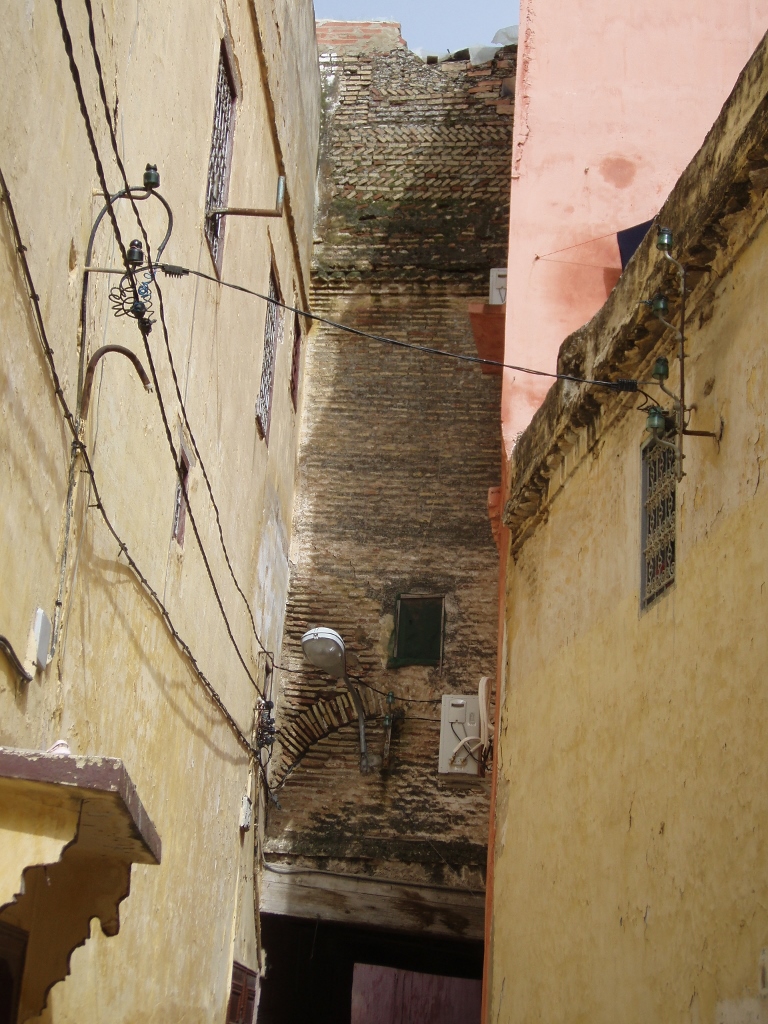 Medina in Meknes, a detail
Medina in Meknes, a detail
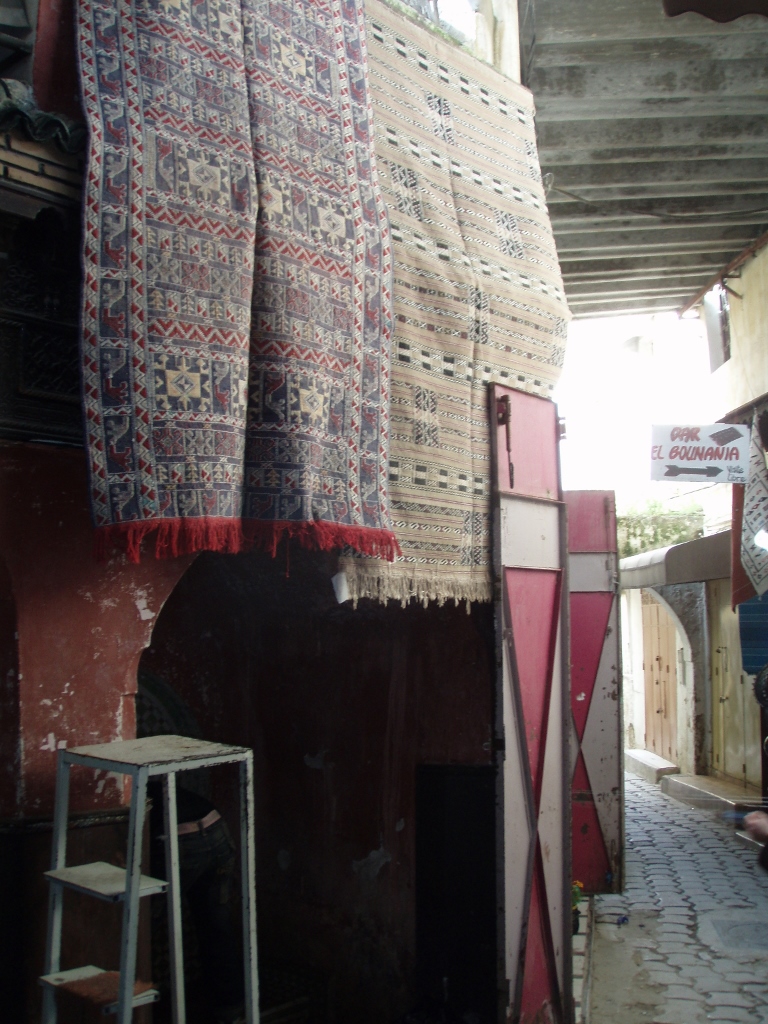 Medina in Meknes, a detail
Medina in Meknes, a detail
That’s how I came to the Bou Inania Madrasa, located across from the Grand Mosque.
To begin with, non-Muslims are not allowed to enter the mosque, but the madrasa is open to visitors and is the most well-known madrasa in the city. By the way, a madrasa is essentially a theological school (for boys) and this particular one was founded in the 14th century.
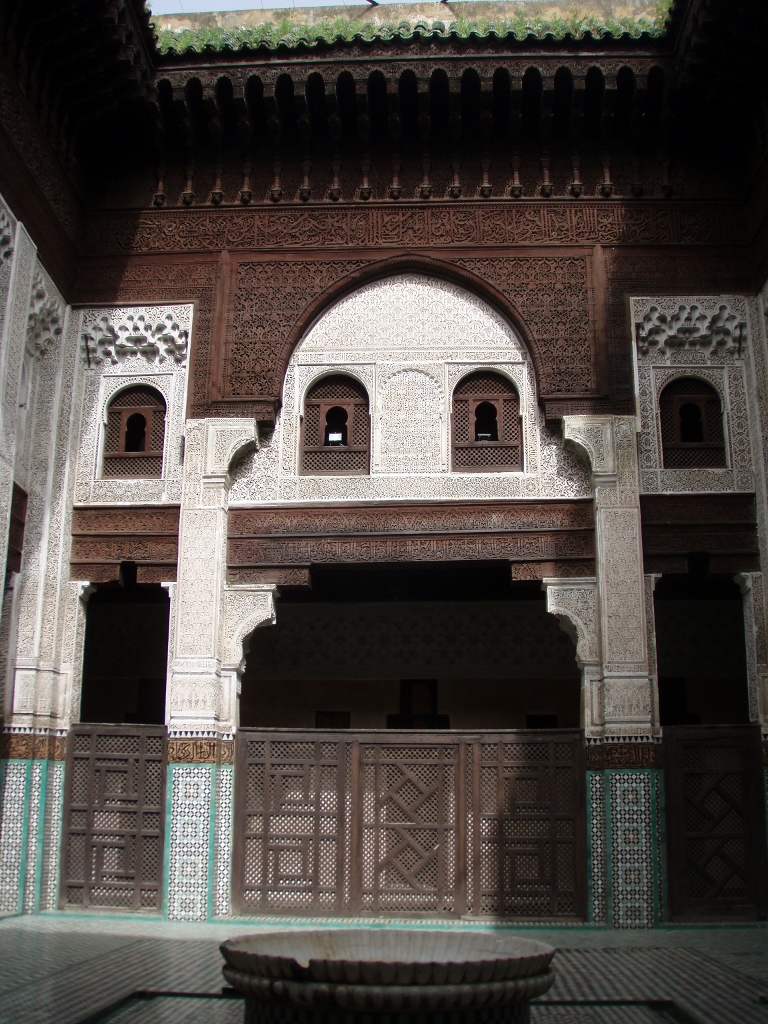 Medina in Meknes, a detail
Medina in Meknes, a detail
On the ground floor, around the inner courtyard, there are small rooms where students once lived, but at the time of my visit, all of that was empty since neither students nor teachers live there anymore.
The inner courtyard is characterised by typical decorative elements – ceramic tiles, stucco work and woodcarving.
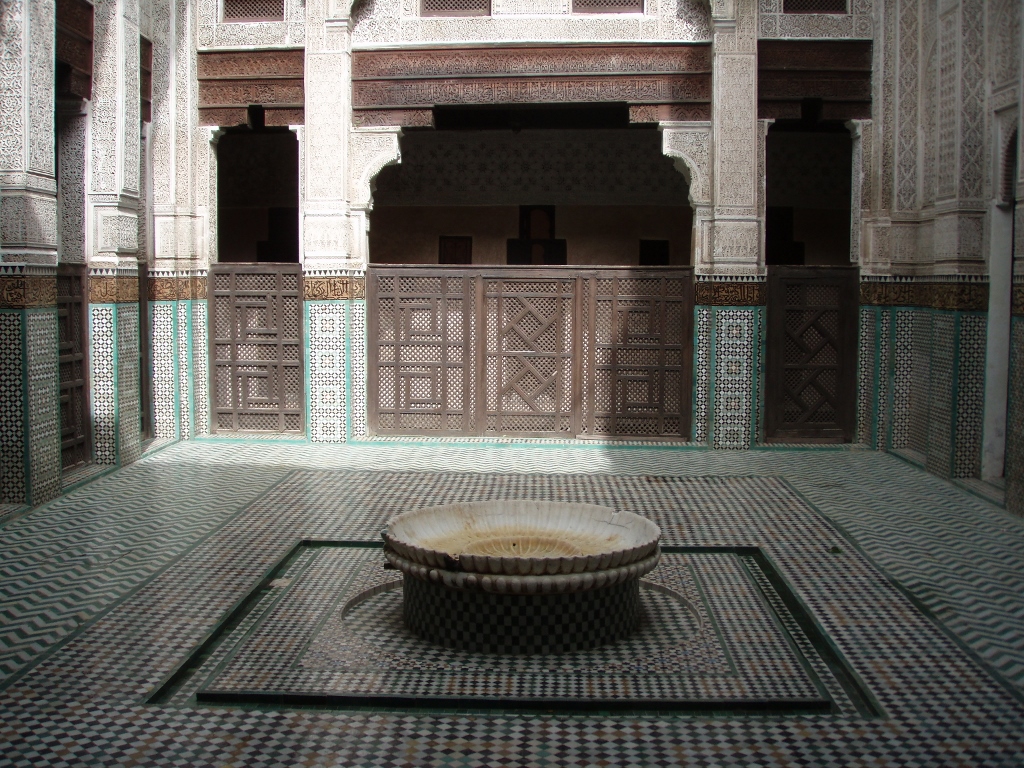 Medina in Meknes, a detail
Medina in Meknes, a detail
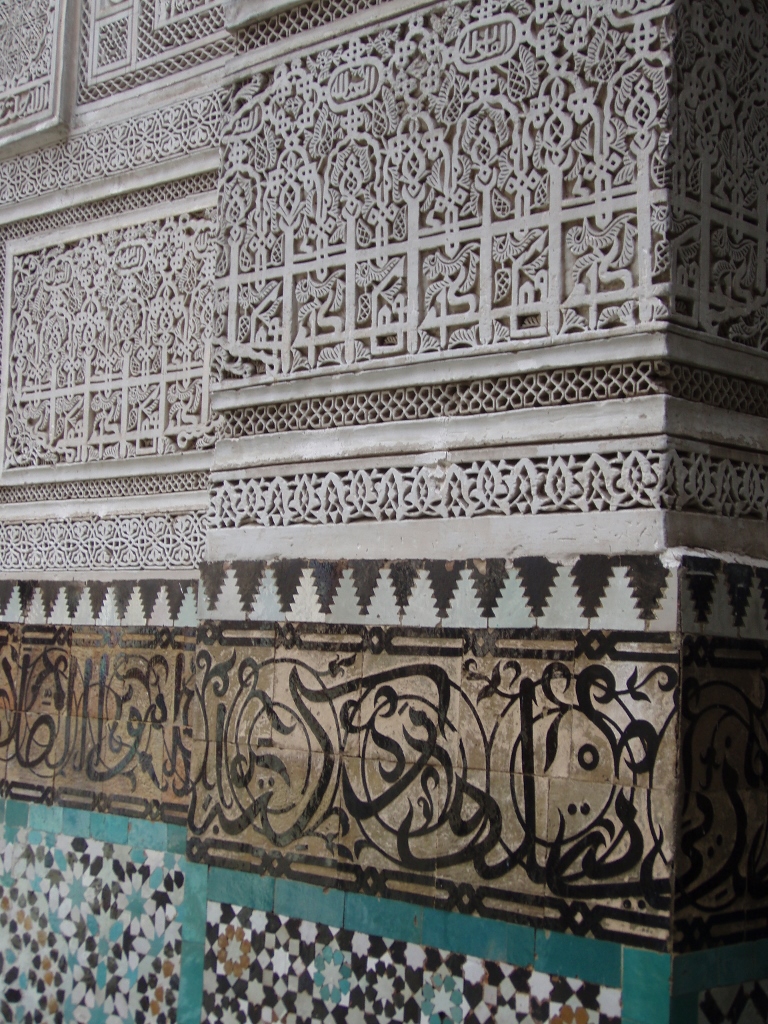 Medina in Meknes, a detail
Medina in Meknes, a detail
When you look up from the inner courtyard, you can see a part of the minaret of the Grand Mosque, but even better is that visitors can go up to the roof of the madrasa and from there at least get a view of the neighbouring mosque and the surrounding area.
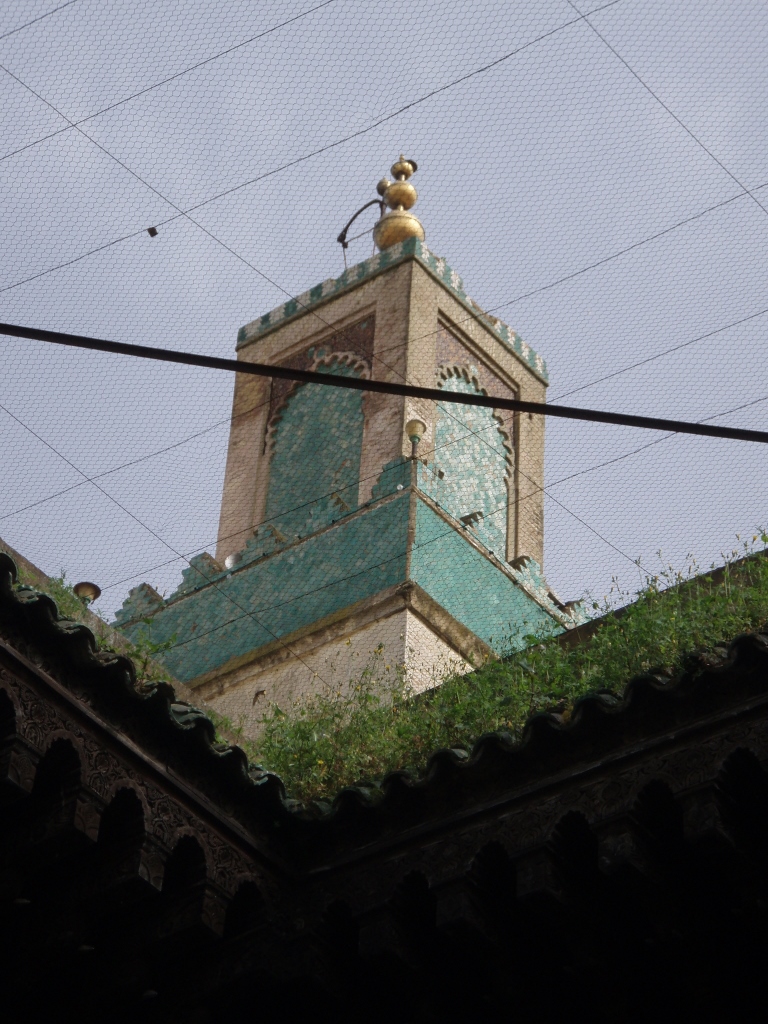 Medina in Meknes, a detail
Medina in Meknes, a detail
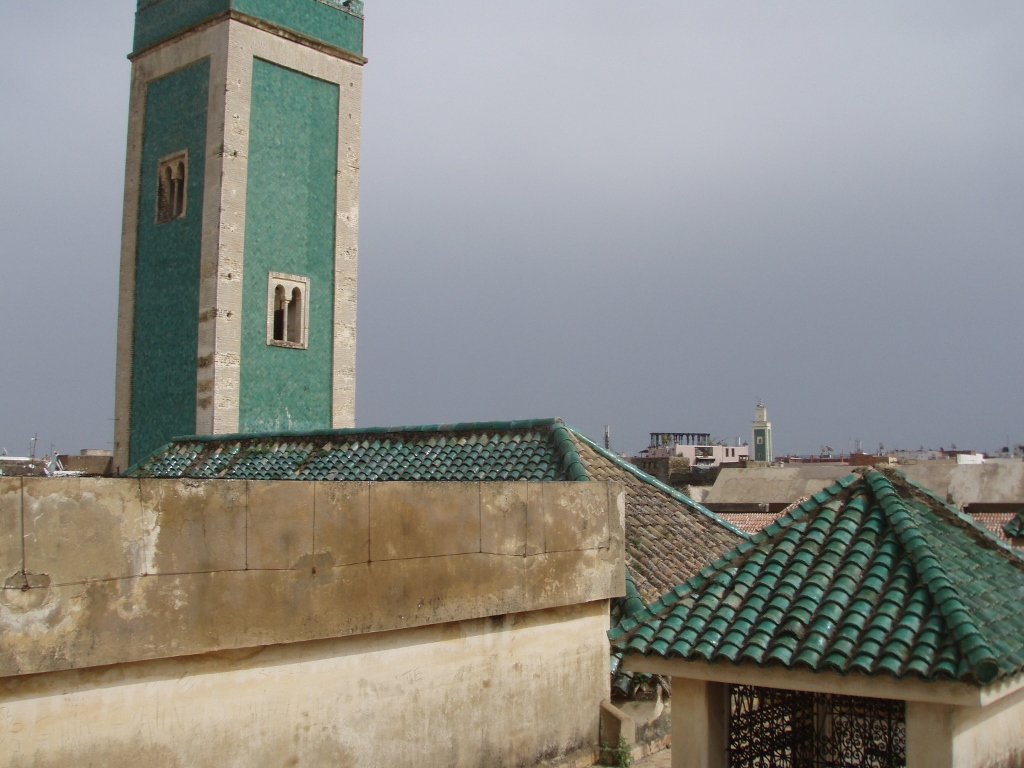 Medina in Meknes, a detail
Medina in Meknes, a detail
In Morocco, it is typical for minarets to have a square plan and this will be quite evident in the photos included in these stories from my 2010 trip through Morocco.
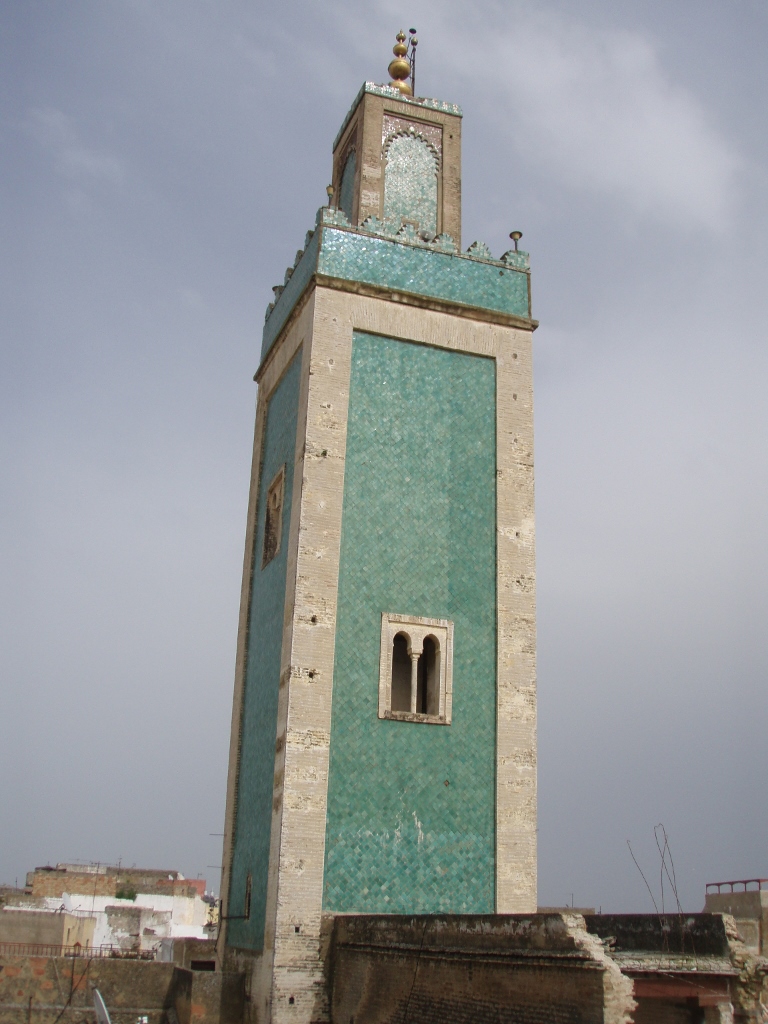 Medina in Meknes, a detail
Medina in Meknes, a detail
By the way, the Grand Mosque in Meknes is the most important and one of the oldest mosques in the city. It was founded in the 12th century, but has been renovated several times.
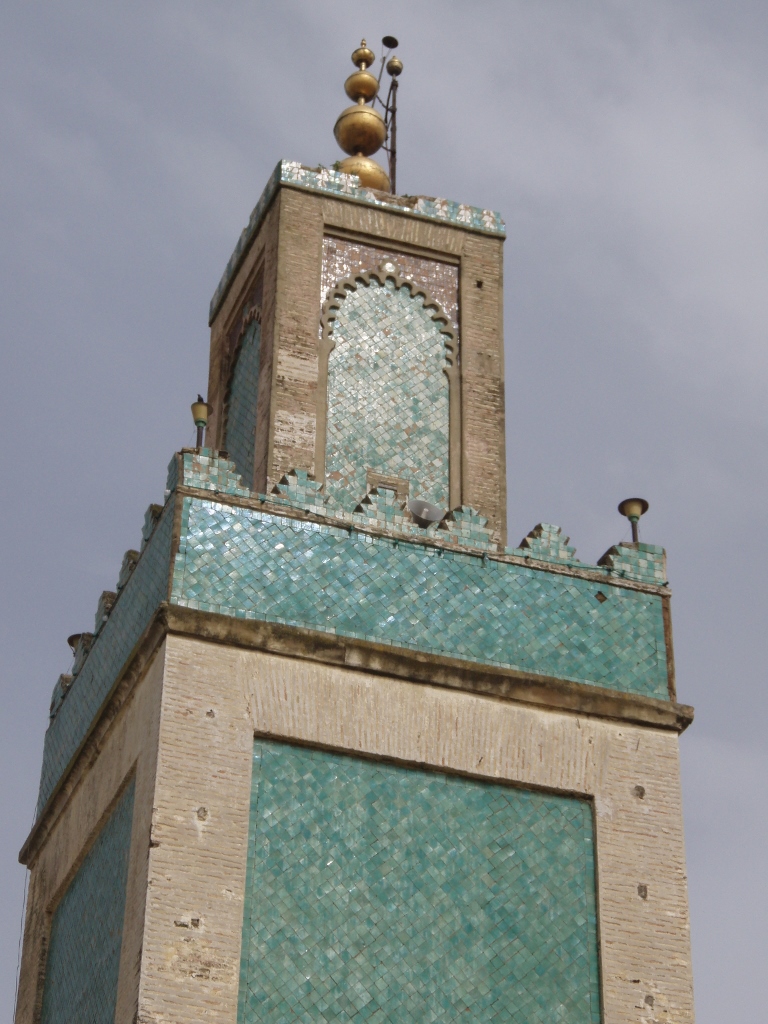 Medina in Meknes, a detail
Medina in Meknes, a detail
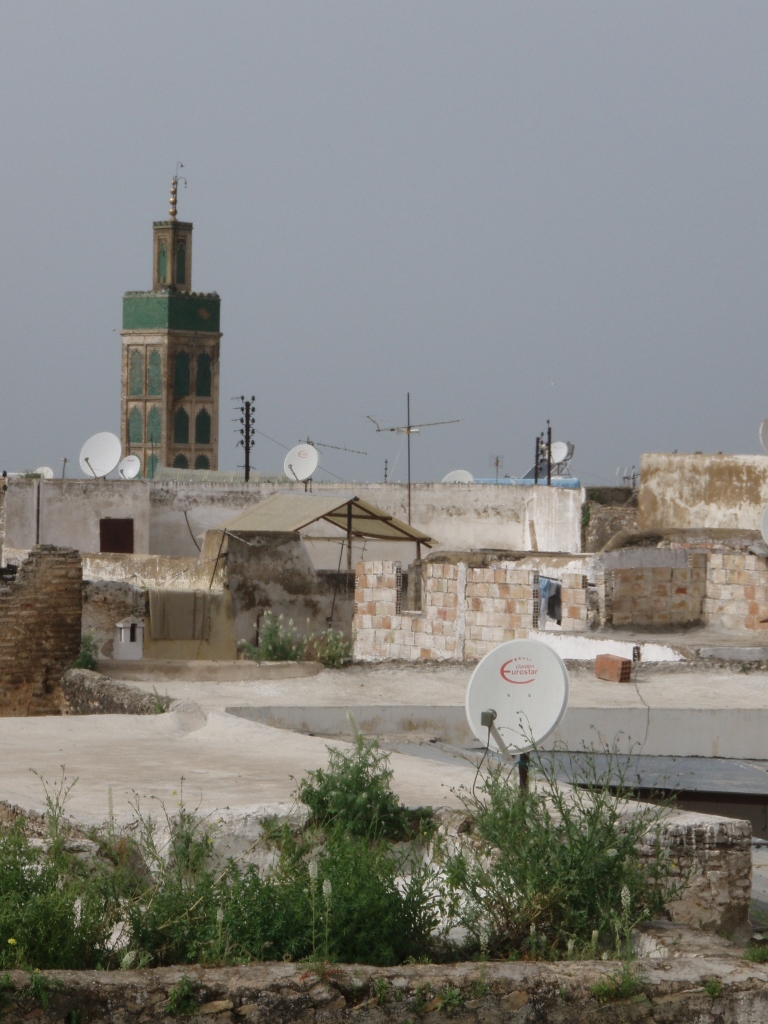 Medina in Meknes, a detail
Medina in Meknes, a detail
After this, I went down and moved on, but along the way saw a fountain with beautifully crafted ceramic decoration.
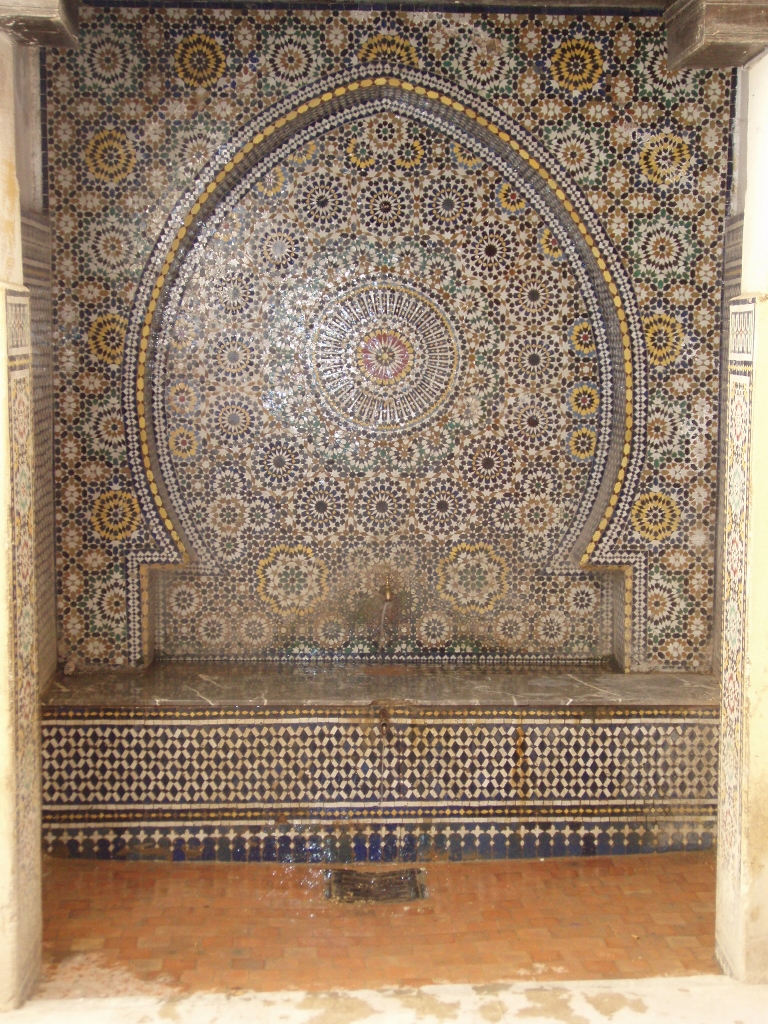 Medina in Meknes, a detail
Medina in Meknes, a detail
Having continued my walk, I soon reached el-Hedim Square. There, I came across some tourists and asked them to take a photo of me in the square. The picture taken on that occasion is interesting to me for two reasons: first, it’s one of the rare photos where the square is actually visible, and second, I’m smiling quite widely in a way that’s pretty uncharacteristic for me. That’s not especially important, except that I think I looked too skinny at the time (at least that’s how I appear to myself in the photo), though maybe I was just still worn out from the colds I’d had before the trip.
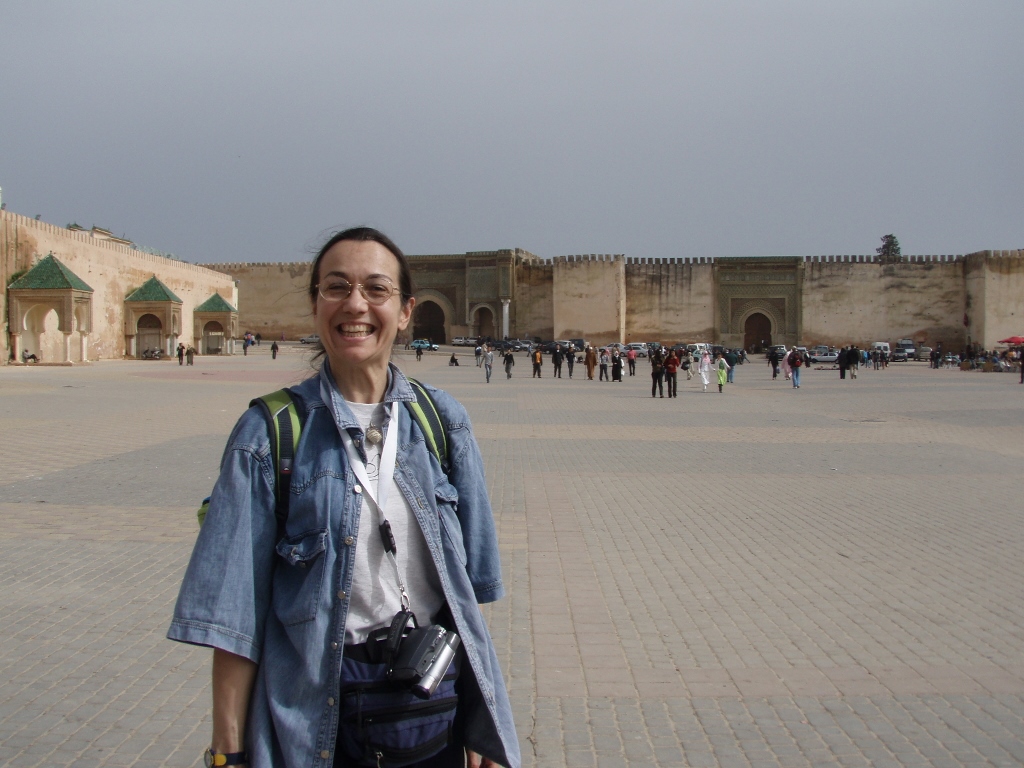 Me in Meknes
Me in Meknes
To start with, I focused on the details on the northern side of the square, such as a beautifully decorated fountain.
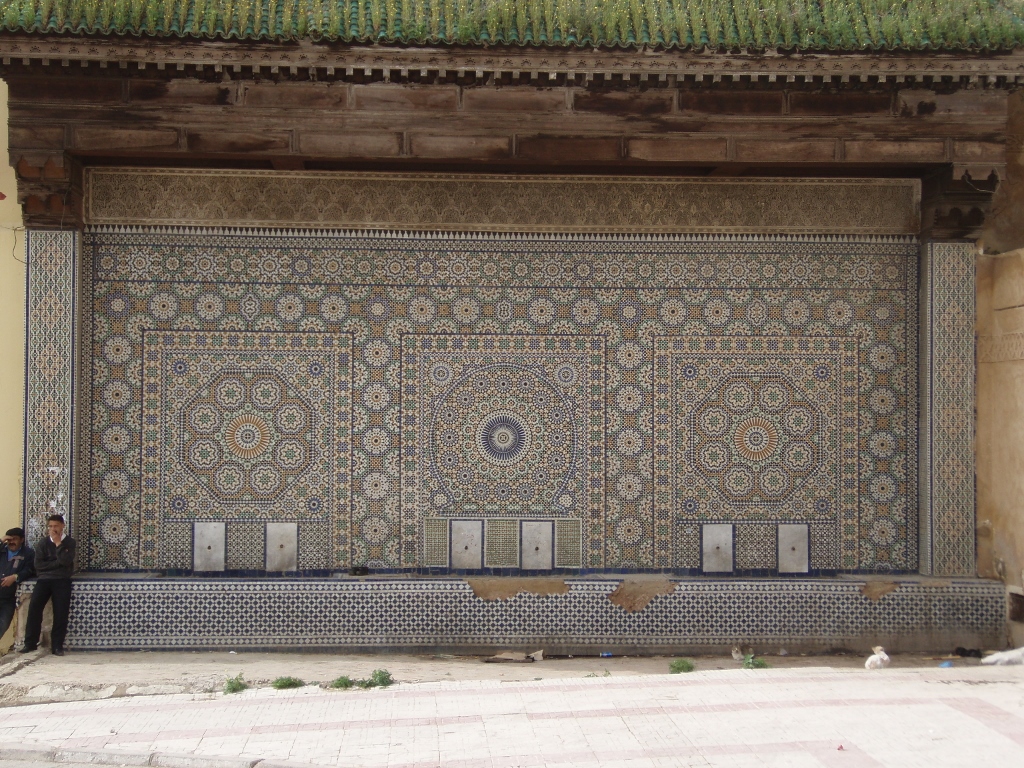 Medina in Meknes, a detail
Medina in Meknes, a detail
Then I walked a bit further north and came to the carpet souq and the “auction market.”
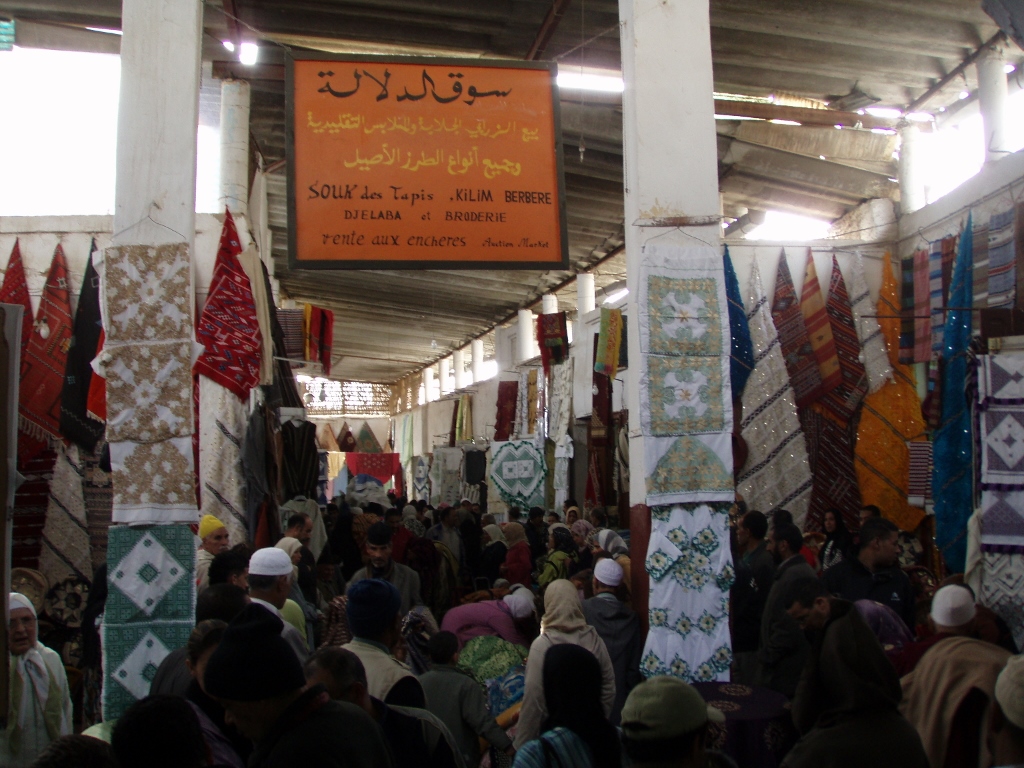 Medina in Meknes, a detail
Medina in Meknes, a detail
I walked through the surrounding streets as well and took a few photos there. As you can see, everything imaginable is sold here. At times, it even resembles a kind of a flea market, with a mix of formal and informal stalls.
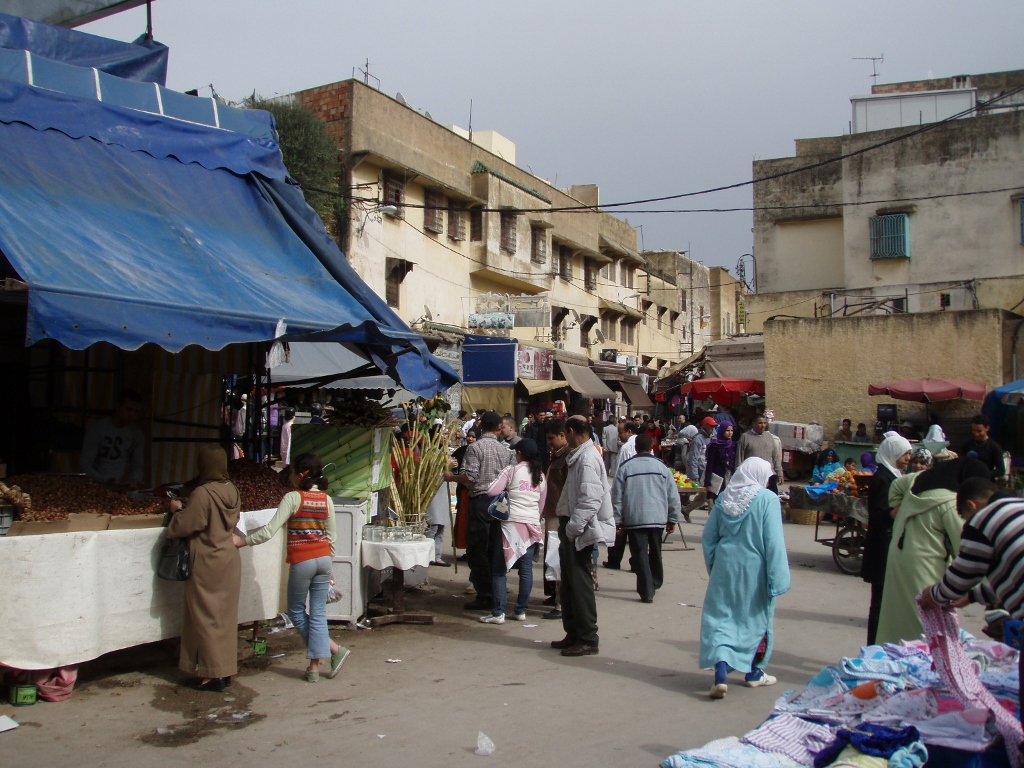 Medina in Meknes, a detail
Medina in Meknes, a detail
Accordingly, there were lots of people on the street and, naturally, a general sense of hustle and bustle.
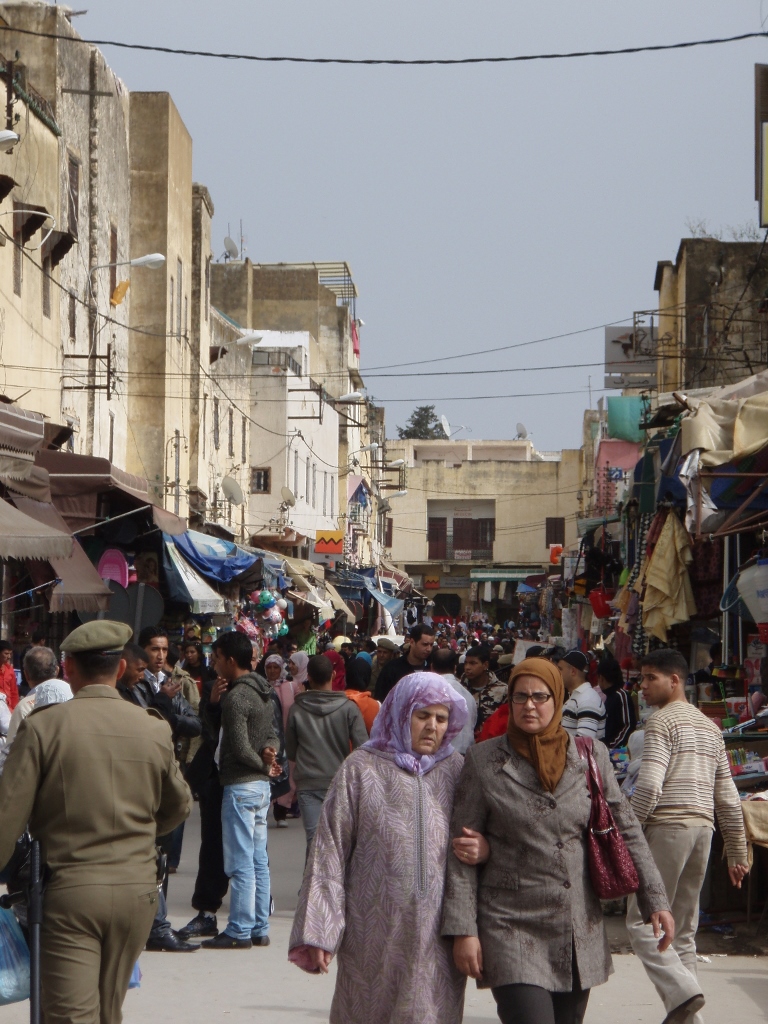 Medina in Meknes, a detail
Medina in Meknes, a detail
Then I came to the Food Hall near el-Hedim Square in the Medina of Meknes. First, I reached the section where pastries were sold. It was clear to me that it wouldn’t be worth starting to buy (and eat) them, as it would be too much. However, I really enjoyed just looking at them and taking photos. Still, it’s important to note that my photos only show a small part of what is offered here.
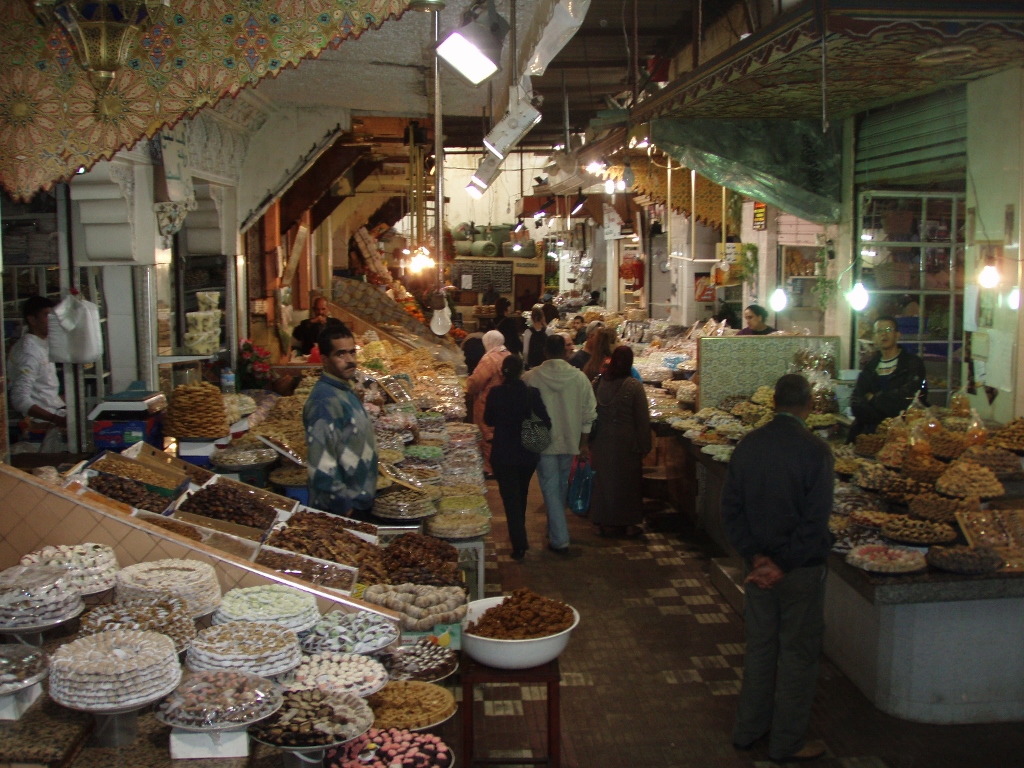 Medina in Meknes, a detail
Medina in Meknes, a detail
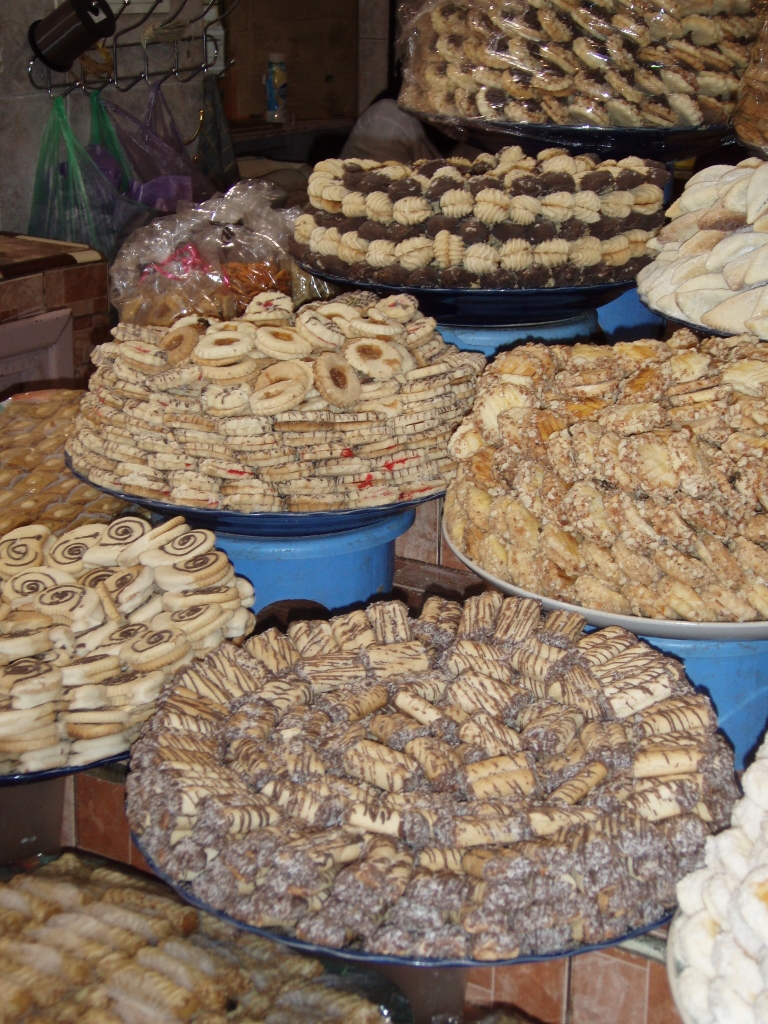 Medina in Meknes, a detail
Medina in Meknes, a detail
Then I moved to the section where olives and preserved lemons are mainly sold, although there is also dried fruit available.
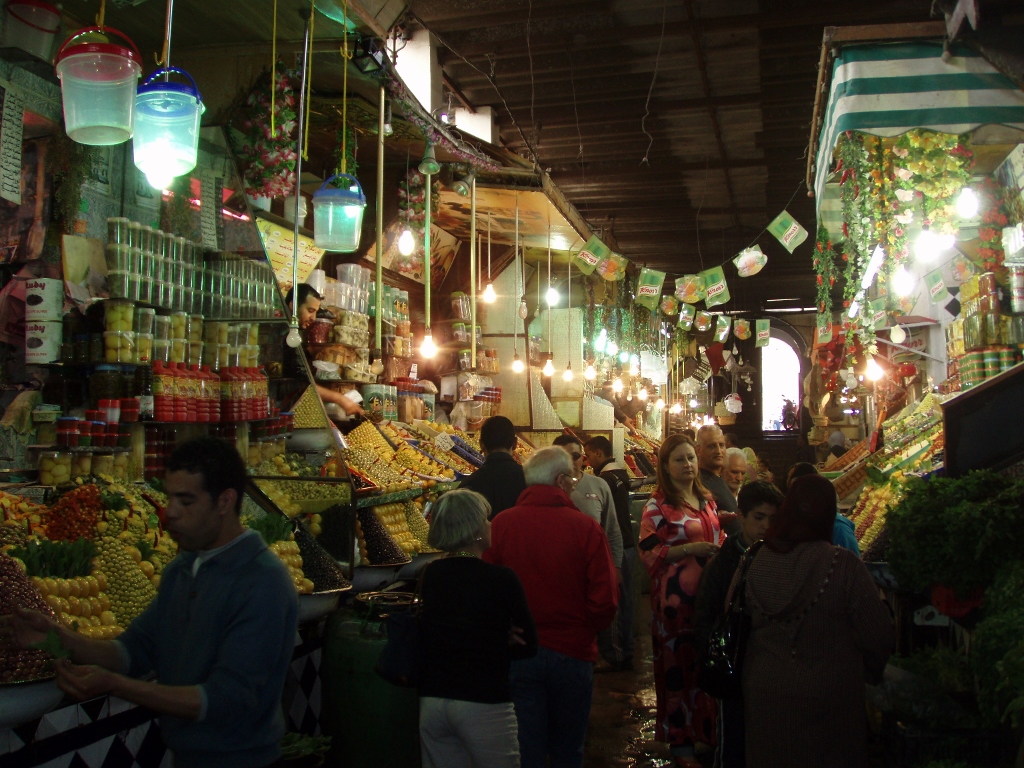 Medina in Meknes, a detail
Medina in Meknes, a detail
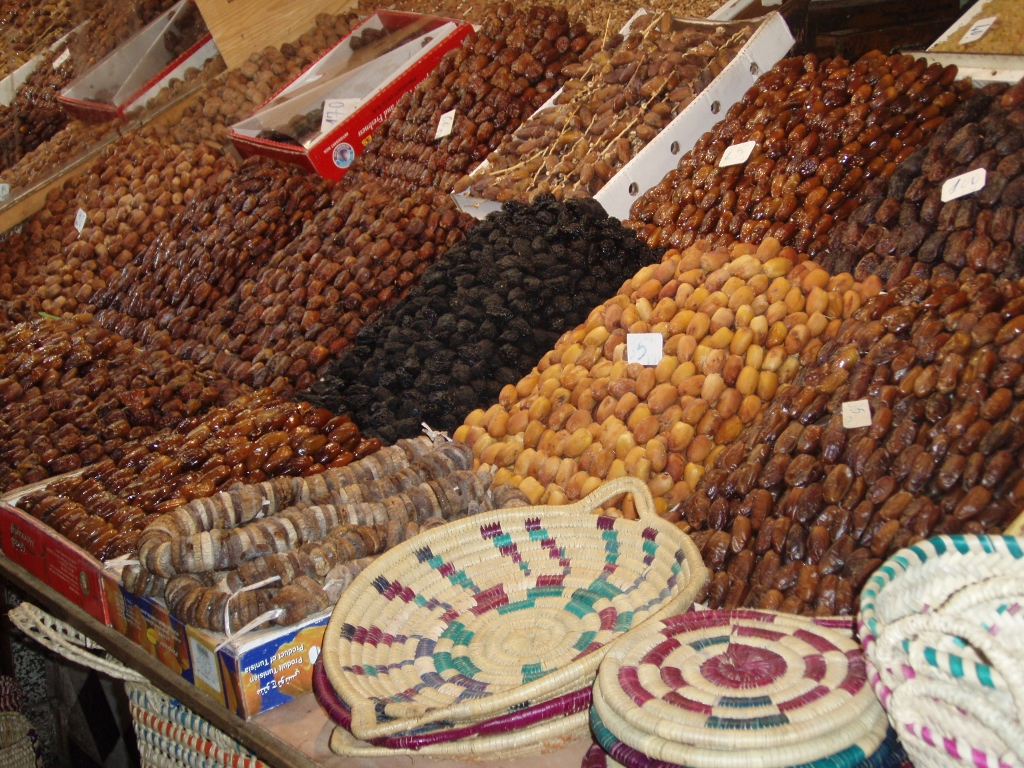 Medina in Meknes, a detail
Medina in Meknes, a detail
The result of the patience with which the vendors arrange their products left a great impression on me. This is especially noticeable with the olives and lemons.
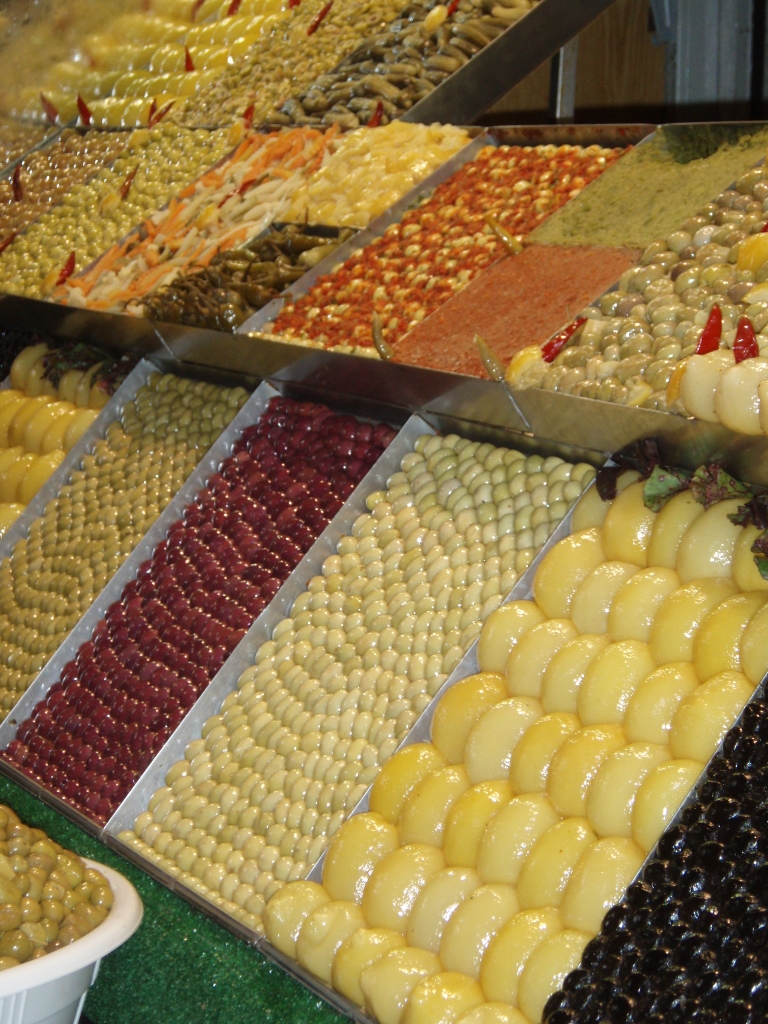 Medina in Meknes, a detail
Medina in Meknes, a detail
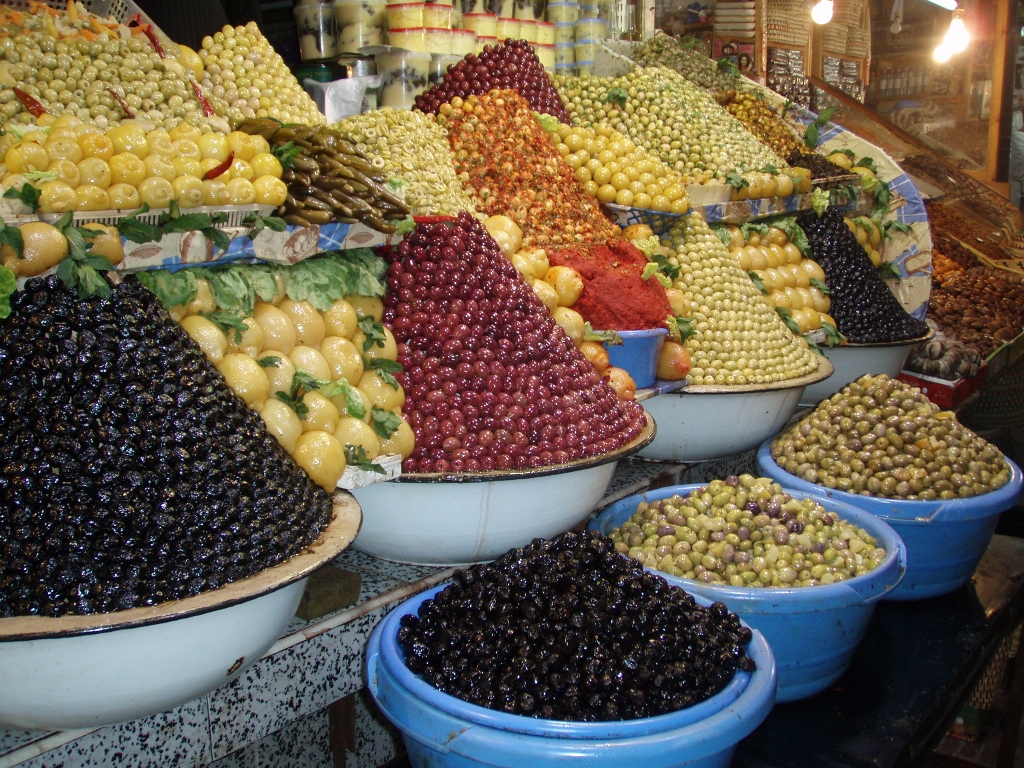 Medina in Meknes, a detail
Medina in Meknes, a detail
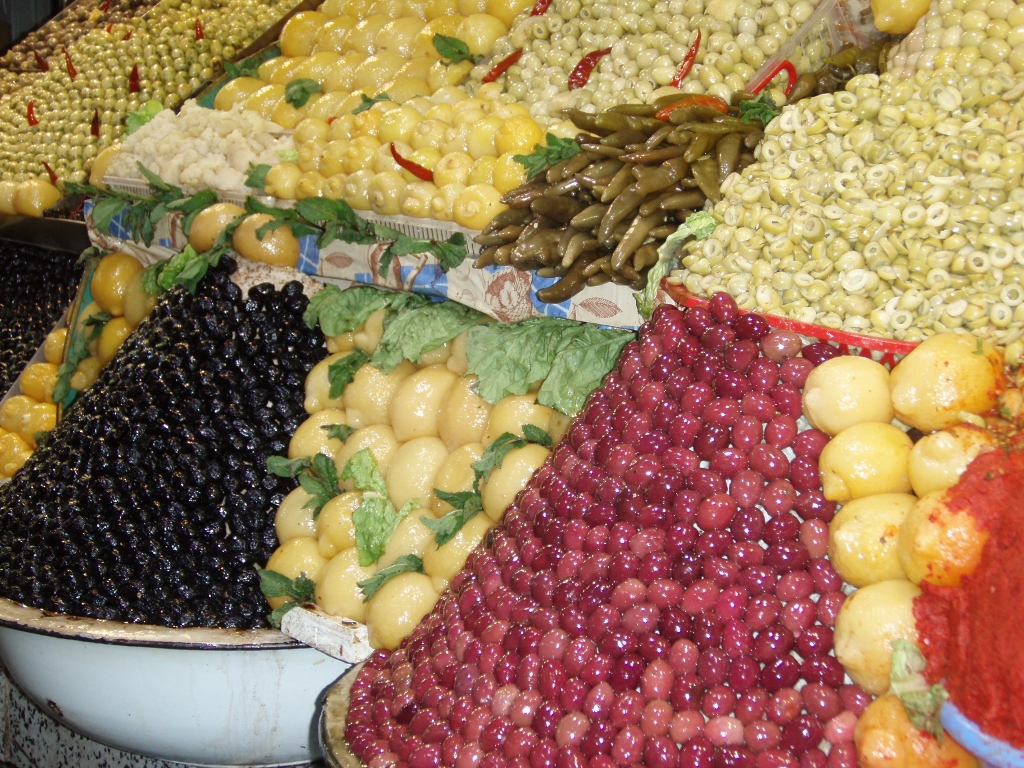 Medina in Meknes, a detail
Medina in Meknes, a detail
It was also interesting that I had a long conversation with an olive vendor about democracy, life, death, and similar topics. It was a very pleasant encounter and exchange of ideas, which is something I really enjoy and believe brings beauty to staying in foreign countries and travelling.
Finally, I made my way back to el-Hedim Square. The next photo shows the part where the Food Hall is located, while the following one depicts the opposite, eastern side of the square.
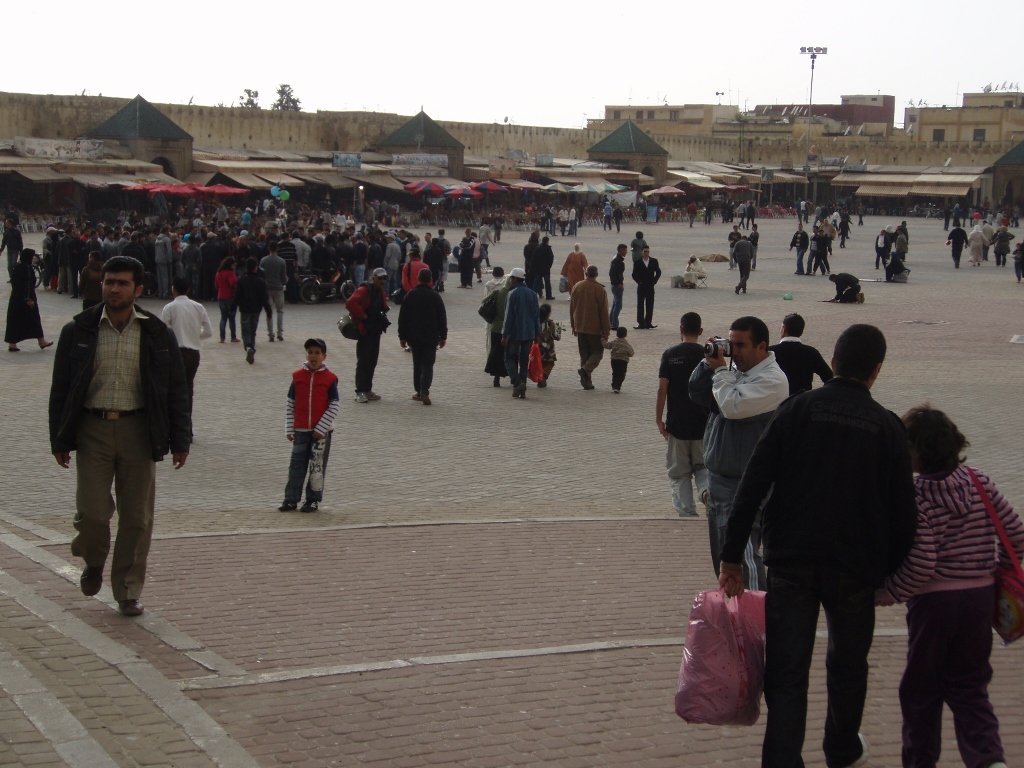 El-Hedim Square in Meknes
El-Hedim Square in Meknes
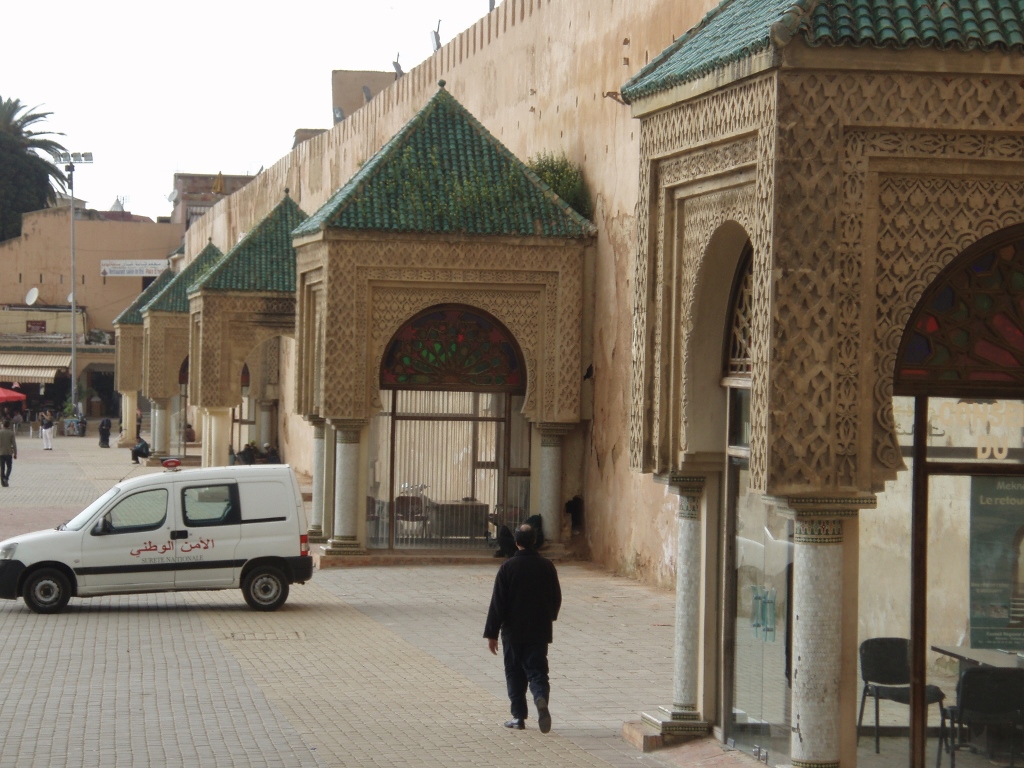 El-Hedim Square in Meknes, a detail
El-Hedim Square in Meknes, a detail
On the southern side of the square is the Bab el-Mansur gate, which once served as the main ceremonial entrance to the Kasbah, the royal citadel. The gate was built at the end of the 17th and the beginning of the 18th century.
 El-Hedim Square in Meknes, a detail
El-Hedim Square in Meknes, a detail
On the same side of el-Hedim Square as the Bab el-Mansur Gate, just a few dozen metres further, is another gate – Bab El Anaouar, which is believed to have been built around the same time as the previously mentioned gate. By the way, it should be noted that there are different ways of spelling all of these sites, depending on the transcription of the Arabic language.
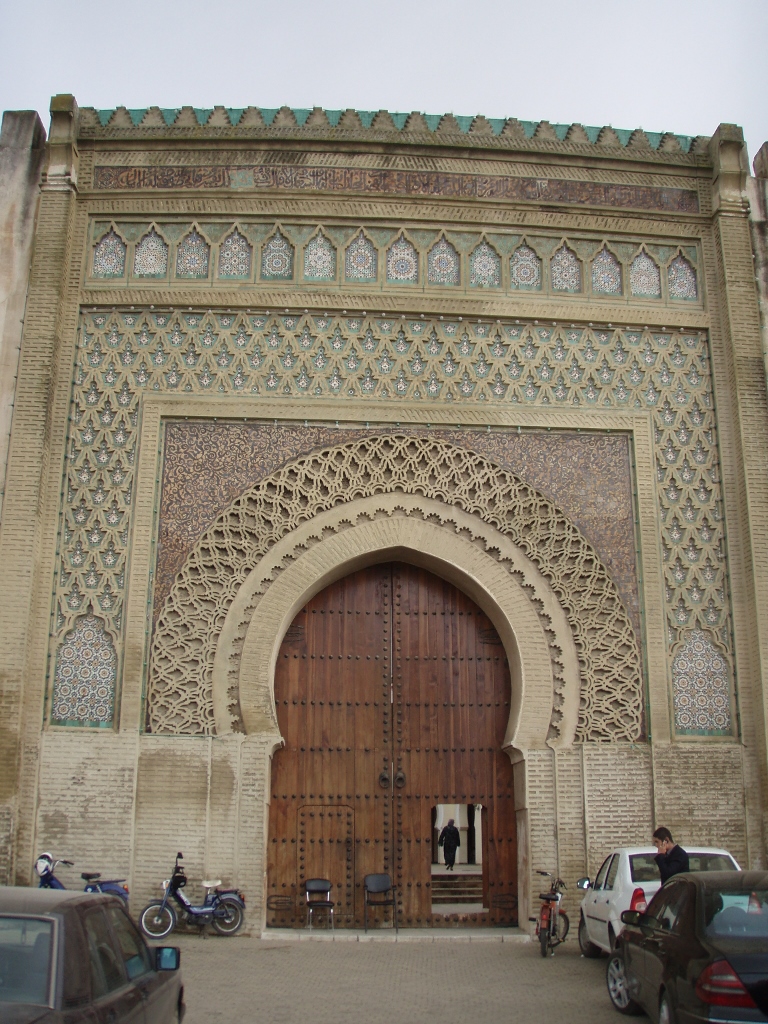 El-Hedim Square in Meknes, a detail
El-Hedim Square in Meknes, a detail
Both of these gates lead to the Kasbah, and since I’m mentioning it, it’s worth noting that the Historic City of Meknes, as a cultural property inscribed on the UNESCO World Heritage List, includes both the Medina and the Kasbah. This means it encompasses fortifications, urban areas, civilian, military, and religious buildings, as well as gardens. While the Medina is a compact and even overcrowded area, the Kasbah consists of a large, open space. It houses the remains of the imperial city of Sultan Moulay Ismail and this area is even four times larger than the entire old city, i.e., the Medina. Some parts are open to the public, while others are not.
Since it wasn’t possible to go through the Bab el-Mansur gate, I went to another passage in the walls, located on the opposite side from Bab El Anaouar. This led me to Lalla Aouda Square, where you can see both the walls and the minaret of the same-named mosque – the Lalla Aouda Mosque. The original mosque was built in the 13th century, but was completely altered in the second half of the 17th century. At that time, it served as the main mosque in the Kasbah and it was also used for the needs of the Moulay Ismail palace.
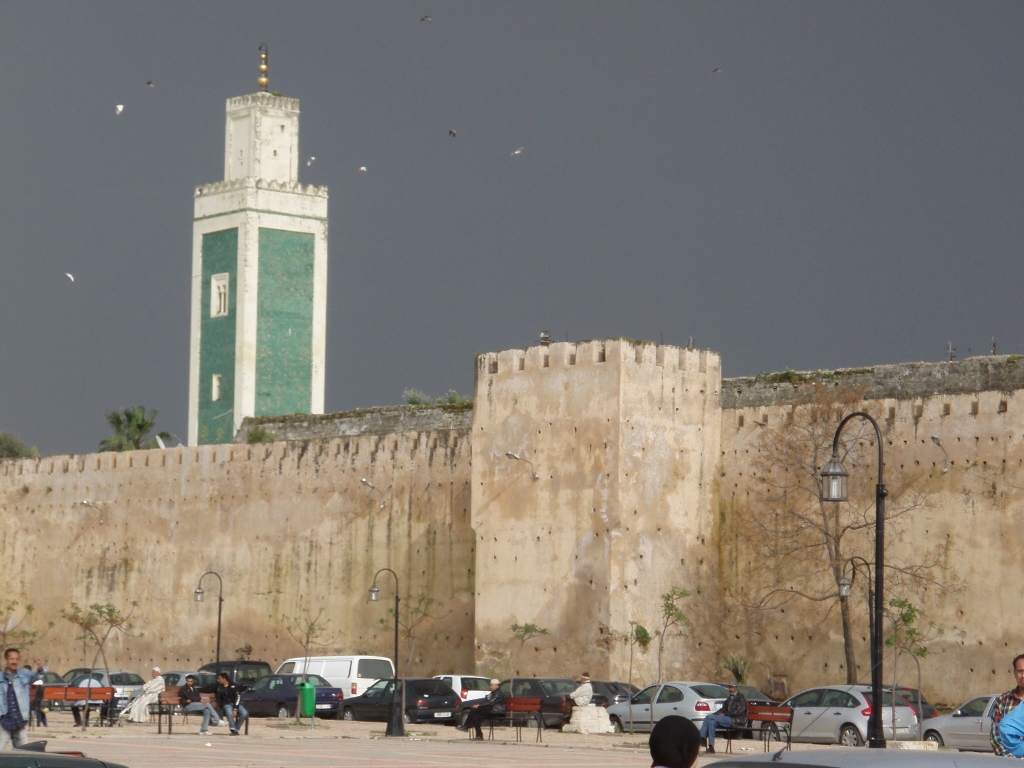 Kasbah in Meknes, a detail
Kasbah in Meknes, a detail
Here, I was taken aback by the dark sky I saw in the distance, which undoubtedly meant that it was raining somewhere over there. Fortunately, it didn’t reach me, while the forecast for the following days clearly showed that there would be no more rain, which suited me perfectly.
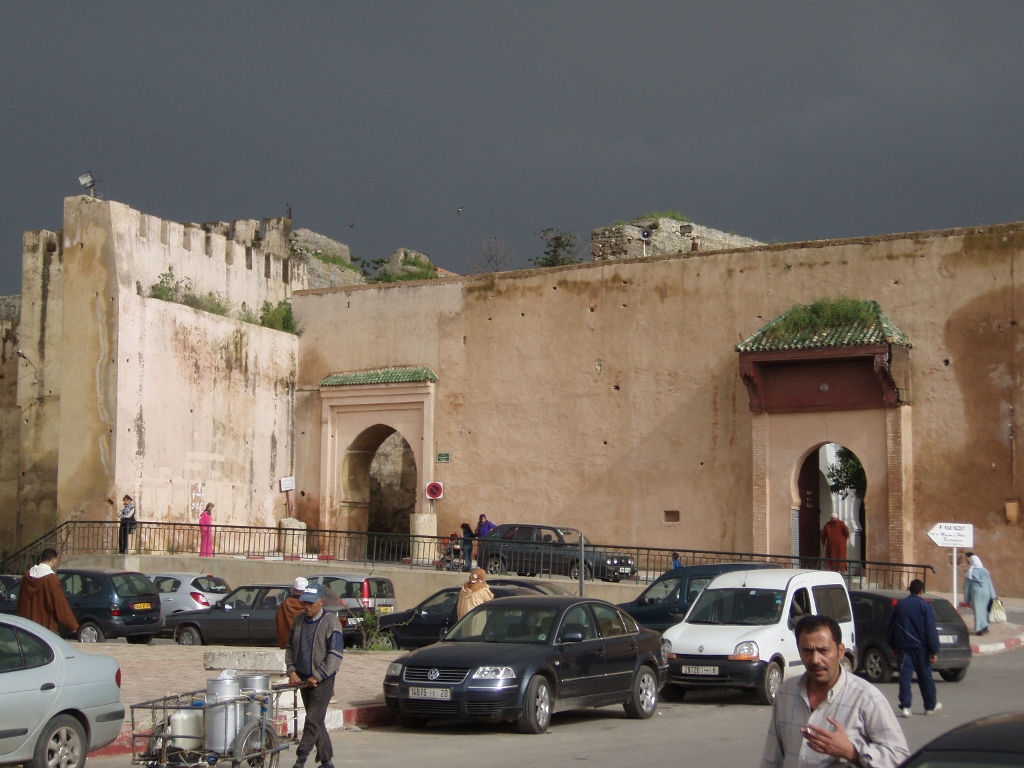 Kasbah in Meknes, a detail
Kasbah in Meknes, a detail
In fact, just a few weeks before my arrival in Morocco in 2010, there had been so much rain here that the minaret of the famous Bab Berdaine Mosque collapsed. This was near the northern gate through which I entered the Medina. During that incident, over 40 people were killed and many more were injured. As far as I’ve read, the minaret and mosque, which date back to the early 18th century, have since been restored or repaired.
For now I continued with my walk and eventually came to another square where I saw a restaurant with a rooftop terrace. It was the perfect time to sit down, rest a bit and have something refreshing to drink. I also had a wonderful view.
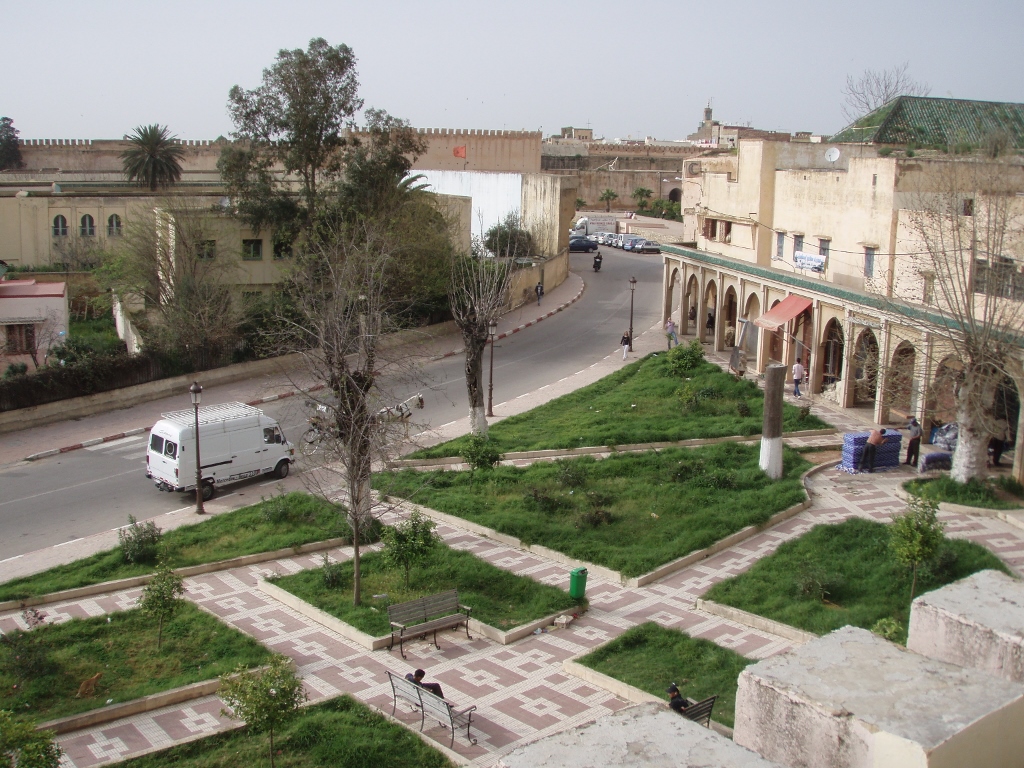 Kasbah in Meknes, a detail
Kasbah in Meknes, a detail
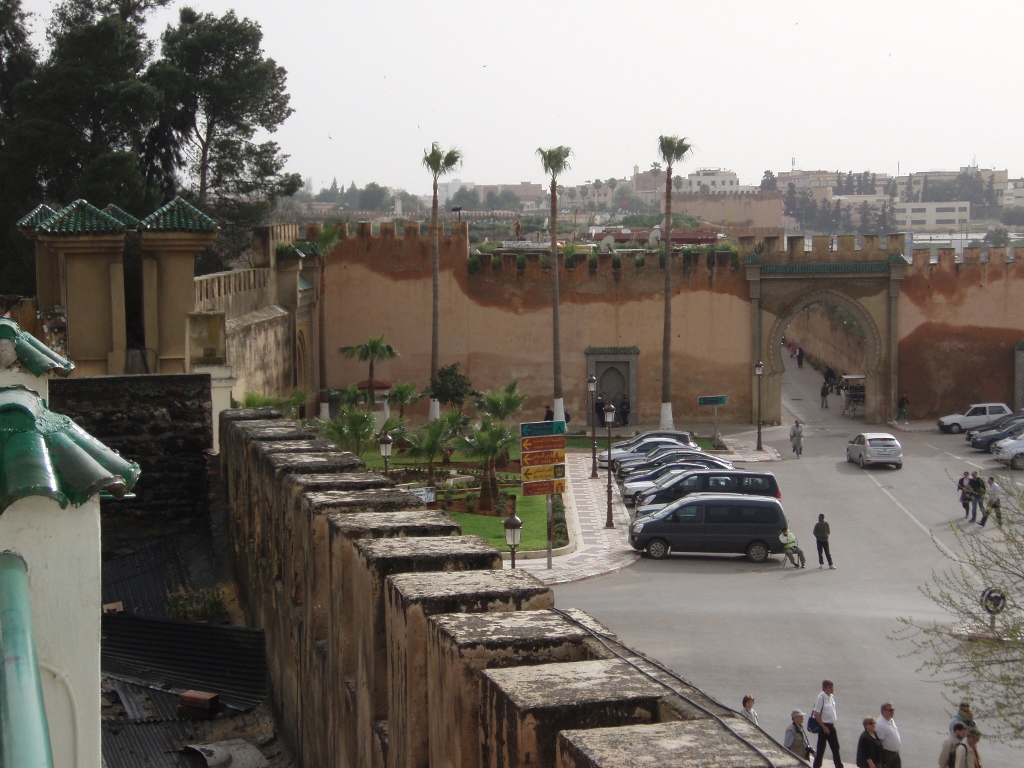 Kasbah in Meknes, a detail
Kasbah in Meknes, a detail
From my "viewpoint," I also had a good view of the Qubbat al-Khayyatin and the Qara Prison. The former was an audience hall where Moulay Ismail received foreign ambassadors.
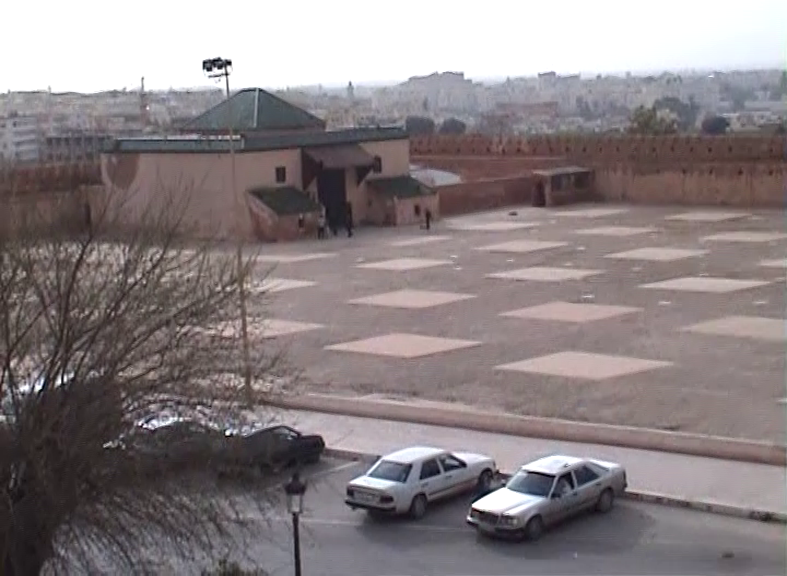 Kasbah in Meknes, a detail
Kasbah in Meknes, a detail
Underneath, there is a large area commonly referred to as the prison, with the story that thousands of Christians perished there. However, it was actually used as a granary.
During my time in Morocco, I didn't have the habit of visiting everything I came across, so I didn’t go to these buildings. On the other hand, there are various parts of the imperial city complex, while visitors are not allowed to enter them anyway.
But, I could continue along one of the streets and in order to do that, I first had to pass through the Gateway of Moulay Ismail, which was built during the reign of this sultan, i.e., at the end of the 17th and beginning of the 18th century.
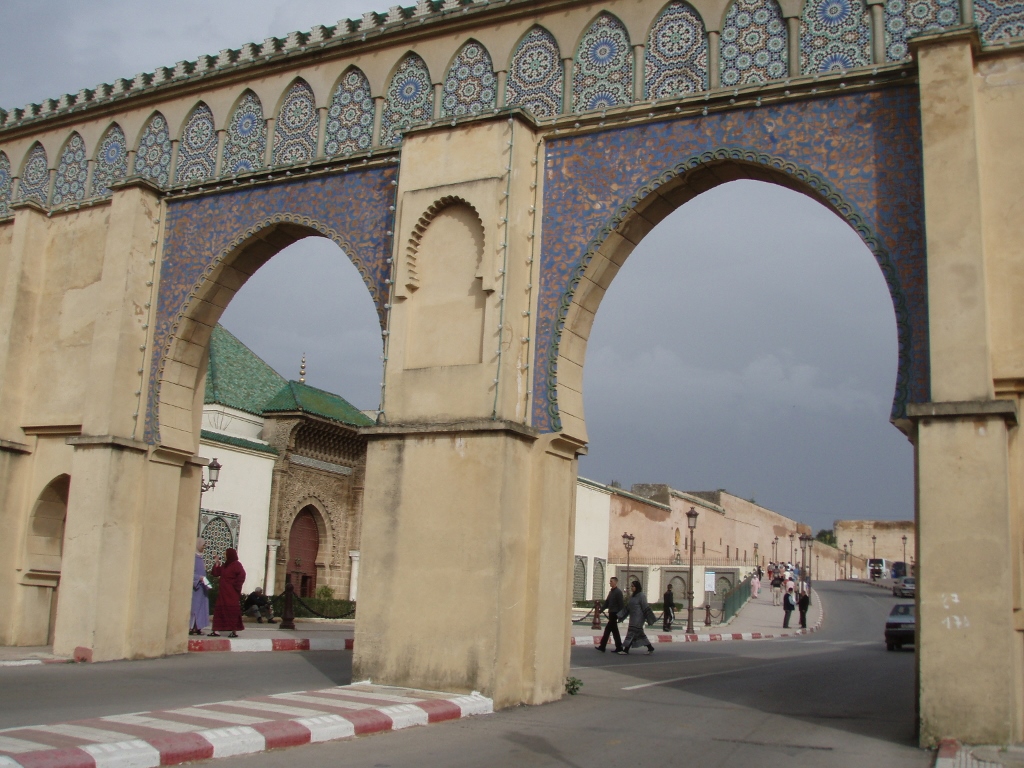 Kasbah in Meknes, a detail
Kasbah in Meknes, a detail
Right behind this gate is the entrance to the Mausoleum of Moulay Ismail, but I didn’t stop there. A partial reason was that I could only visit a museum section, as access to the sultan's tomb itself was only allowed to Muslims. So, I just took a photo of the facade.
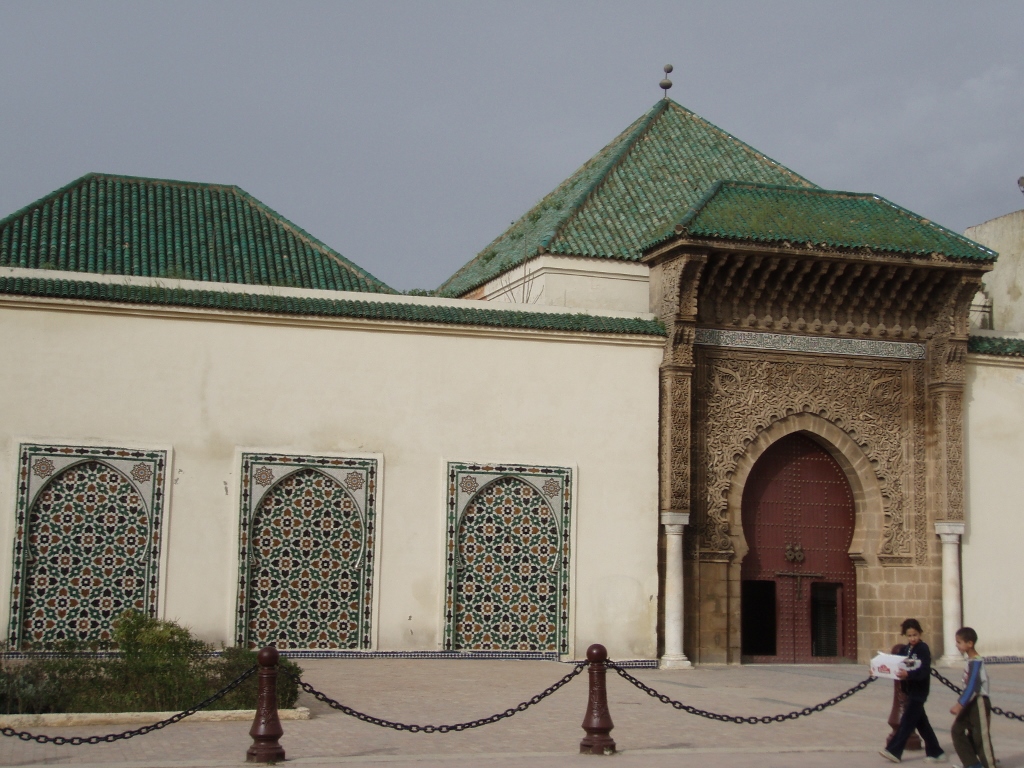 Kasbah in Meknes, a detail
Kasbah in Meknes, a detail
After this, I continued straight down the same street and came to a fairly long section that had high walls on both sides.
 Kasbah in Meknes, a detail
Kasbah in Meknes, a detail
Along the way, I also passed by a gate that leads to the royal palace, but access was not allowed to regular visitors.
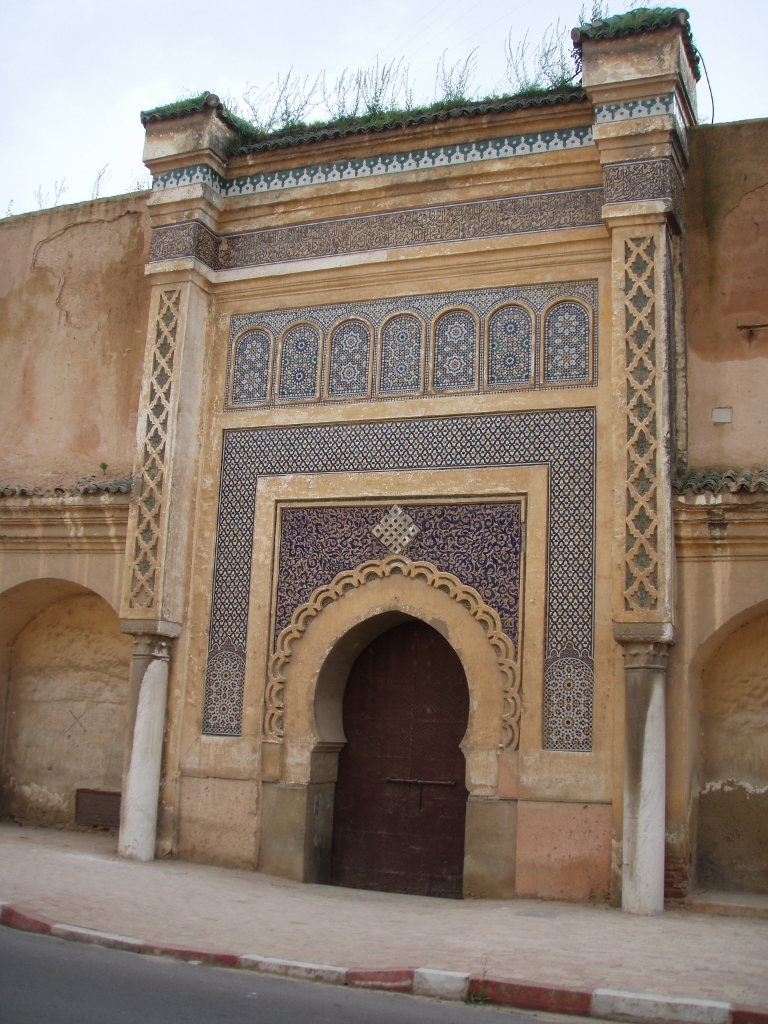 Kasbah in Meknes, a detail
Kasbah in Meknes, a detail
Then I arrived at a large square in front of the entrance to the Royal Palace in Meknes. This is, of course, just one of the official residences of the Moroccan king. The capital is Rabat, but I didn’t go there.
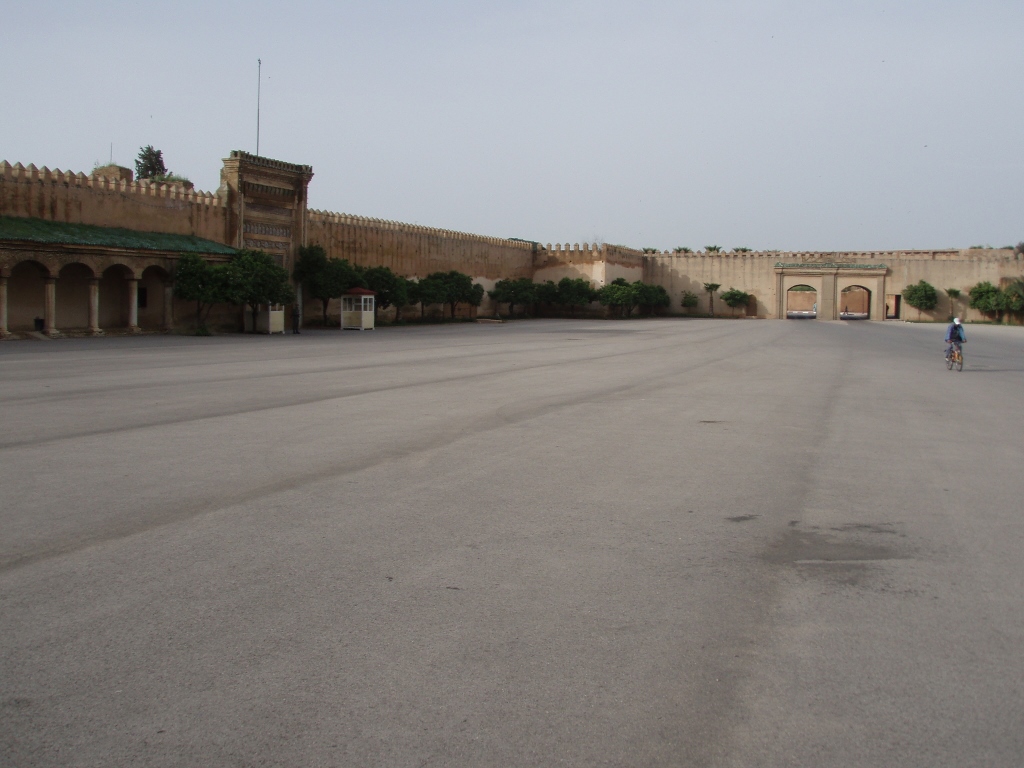 Kasbah in Meknes, a detail
Kasbah in Meknes, a detail
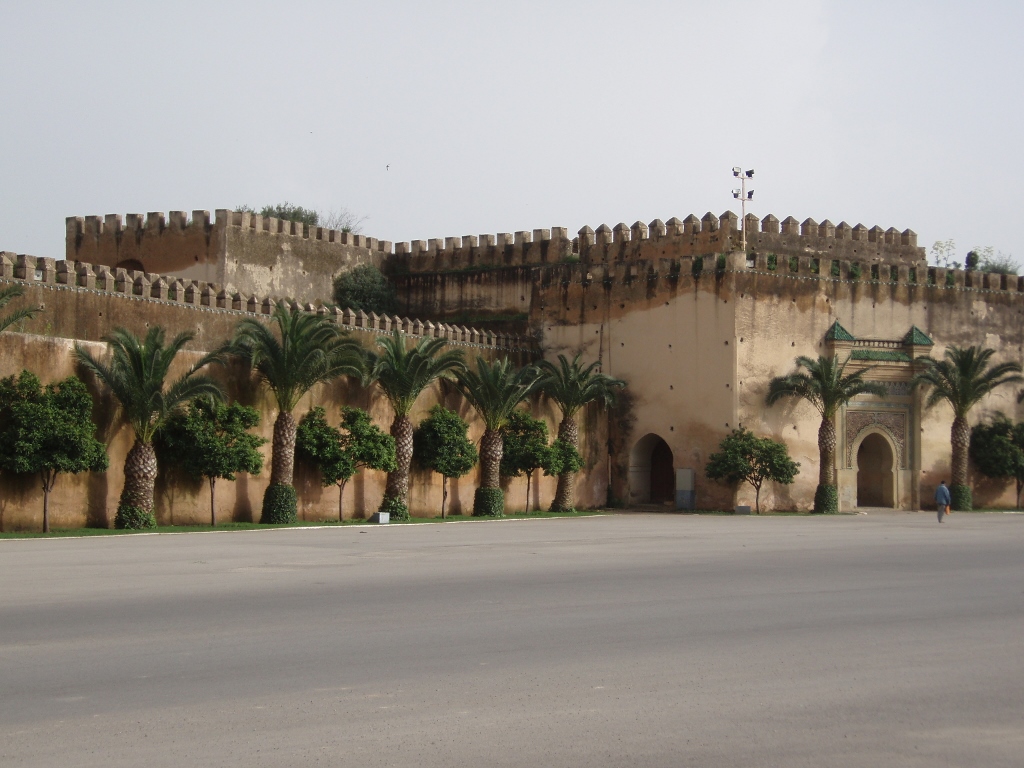 Kasbah in Meknes, a detail
Kasbah in Meknes, a detail
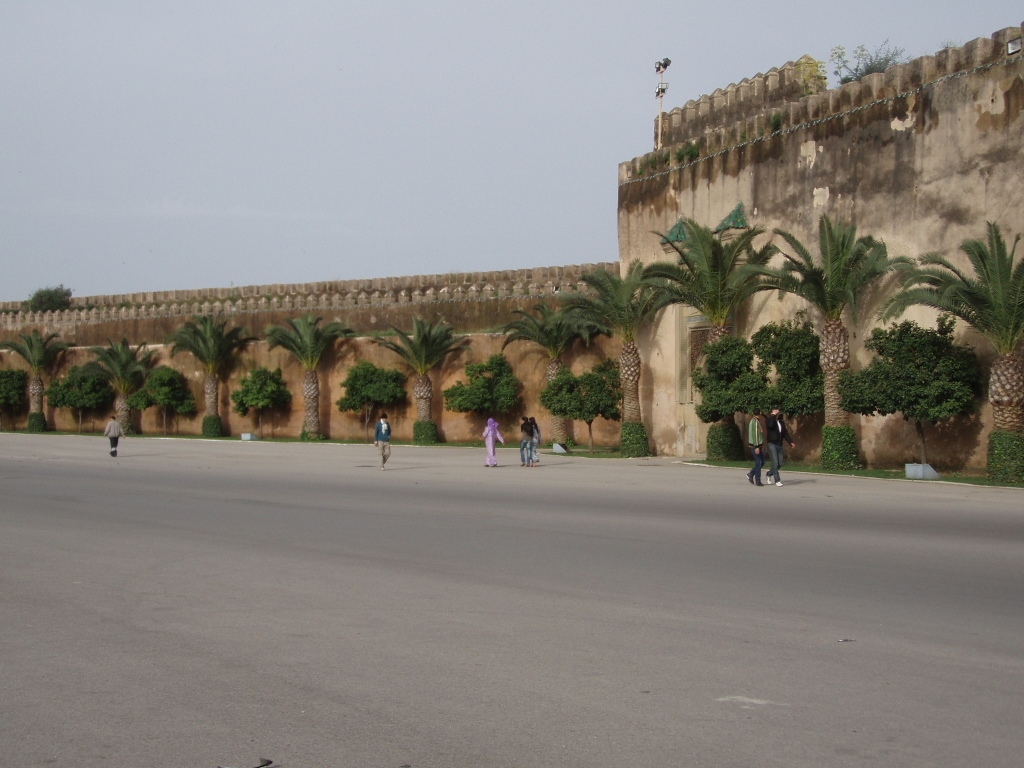 Kasbah in Meknes, a detail
Kasbah in Meknes, a detail
While I was walking around here, I could smell the wonderful fragrance of orange blossoms. It was the blooming season and the scent was enchanting. Later on, further from the royal palace, I saw local residents picking these blossoms, as their oil is highly valued and used both in cosmetics and in food.
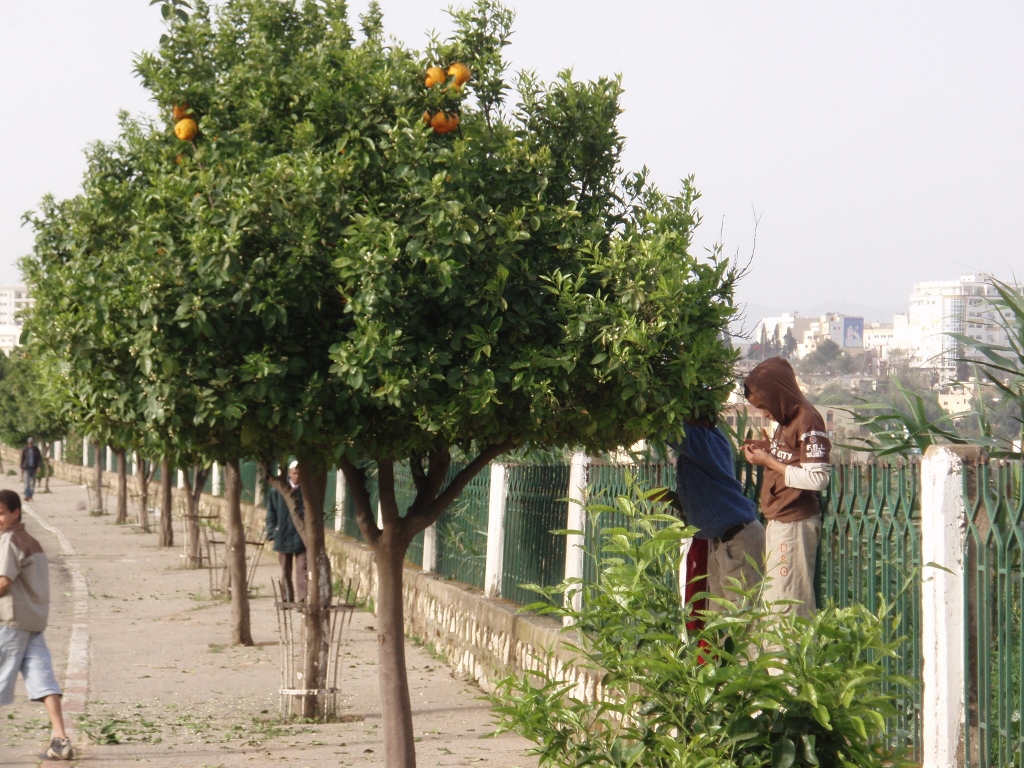 Meknes, a detail
Meknes, a detail
Then I went to another place that is mentioned as interesting. It was the artificial Agdal Basin (319 x 149 m), which was once part of the city's water supply system, but also served as a place to enjoy a pleasant setting. During my visit, some work was being done here, but I wasn’t really too interested in sightseeing anymore, so I just made a short video and later extracted a few "photos" from it.
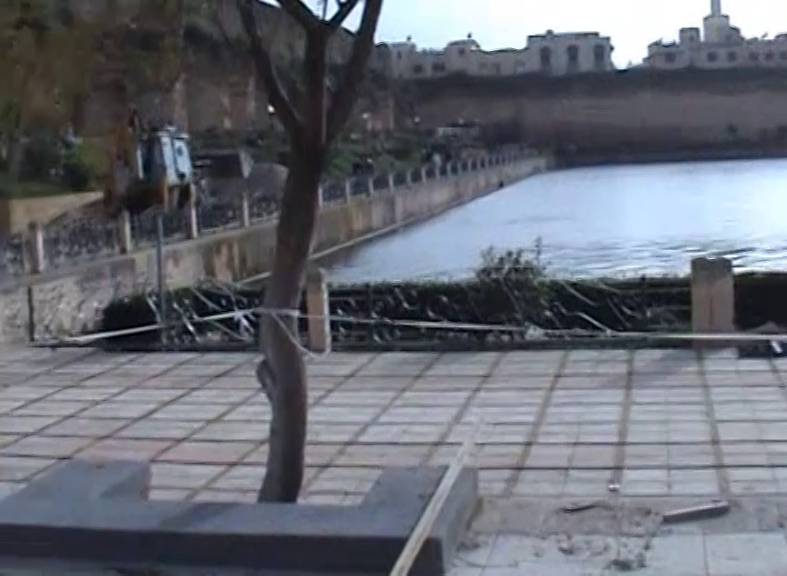 Meknes, a detail
Meknes, a detail
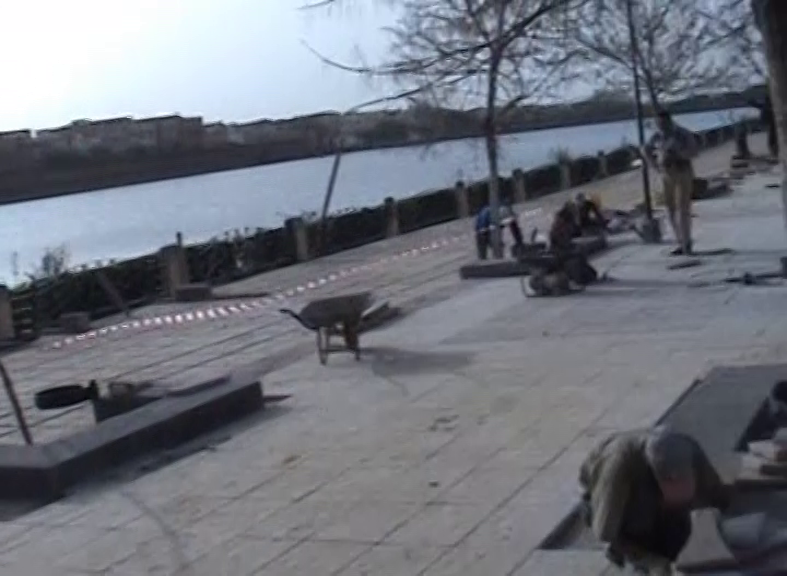 Meknes, a detail
Meknes, a detail
At this point, I started walking back towards the new part of the city on foot and I found a restaurant/café with a terrace where I had a coffee while enjoying a beautiful view of the Medina.
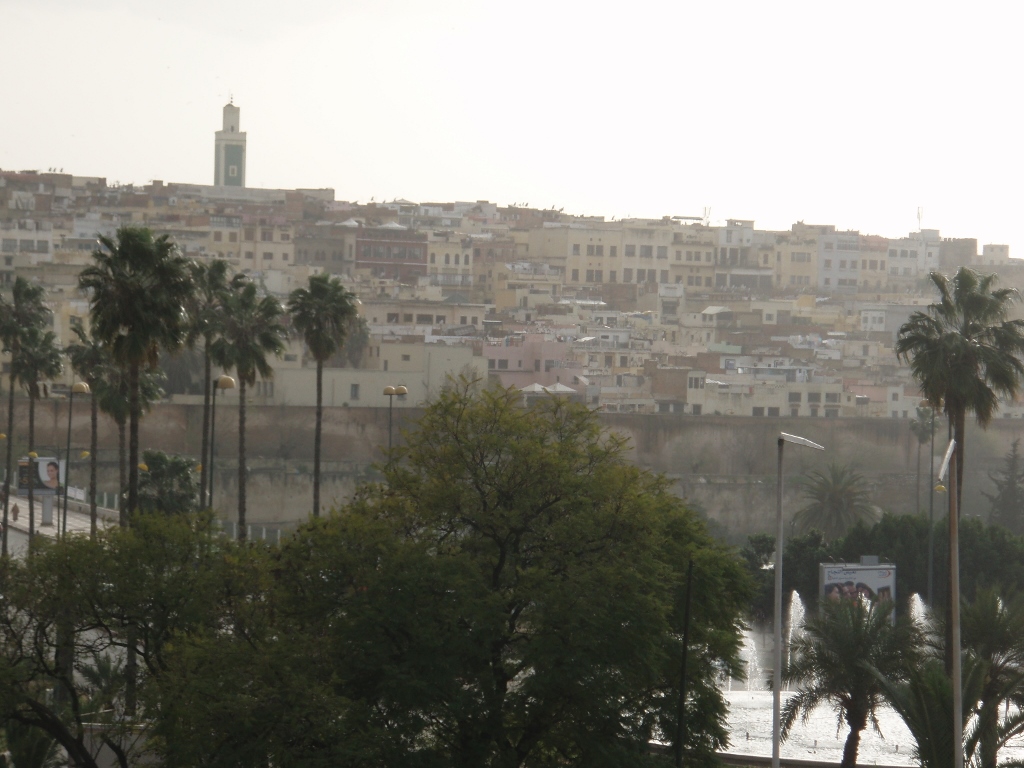 Meknes
Meknes
By now, I was quite tired as I had walked a lot on this day, so that break was much appreciated. I still had more plans for the day, but they were more organisational in nature. The next day, I would continue my journey through Morocco, and for that, I needed to secure a coach ticket.
I’ll share more about all of that, as well as some interesting events and my thoughts on them, in the next part of my stories about the travel around Morocco in 2010.